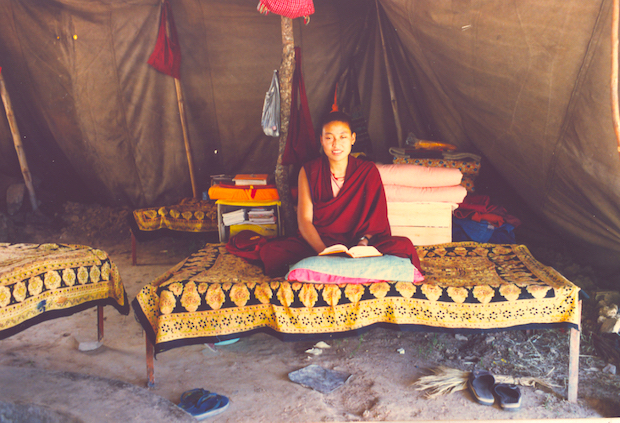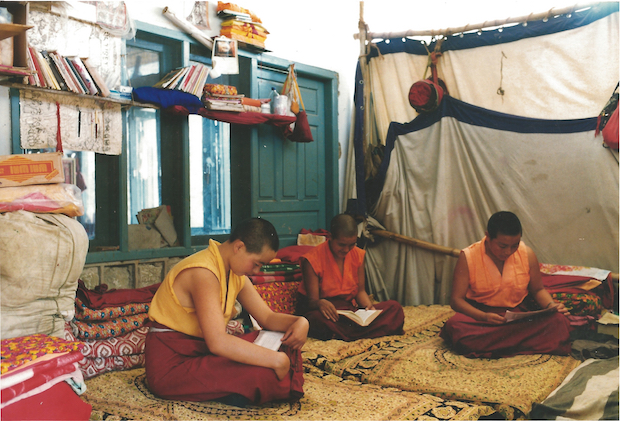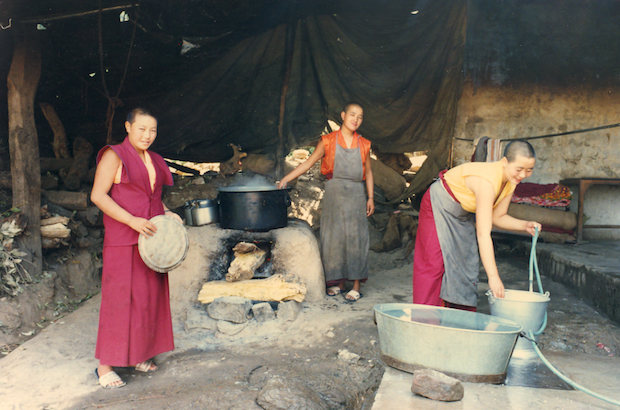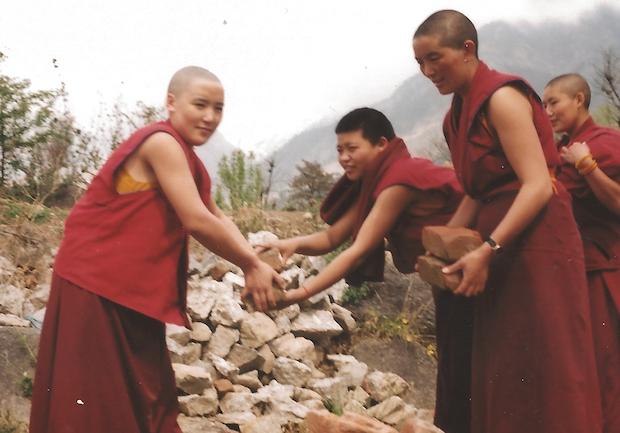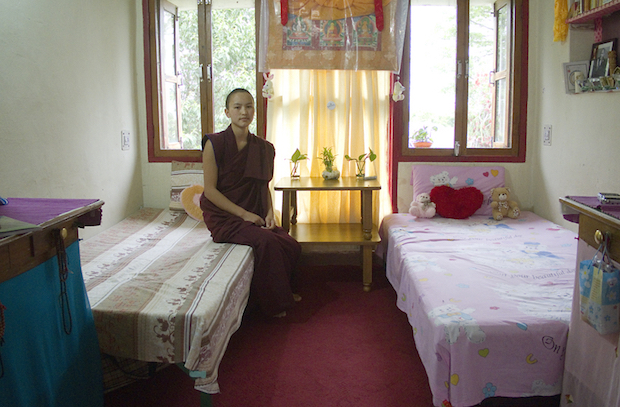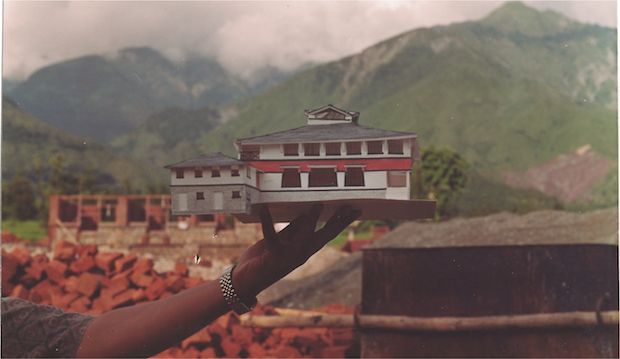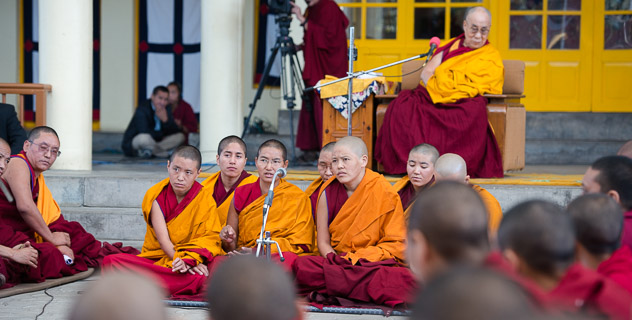Venerable Thubten Lobsang, a senior nun at Geden Choeling Nunnery, has died at the age of 105.
Geden Choeling Nunnery was founded in December 1973 and is is one of the oldest nunneries in exile Tibetan community. It is in Mcleod Ganj, Upper Dharamsala and from its earliest days absorbed a steady stream of nuns escaping from Tibet.
The nunnery, which pre-dates the Tibetan Nuns Project by about 15 years, was started by several nuns who fled the Nechung Ri Nunnery in Tibet after it was destroyed during the Cultural Revolution.

Venerable Thubten Lobsang passed away peacefully on February 23rd, 2023 at the age of 105. Here she is in 2013 photographed at Geden Choeling Nunnery by Brian Harris
With no nunnery in existence these women worked with Tibetan children until a number of refugee nuns gathered together with the purpose of building a nunnery. As there were nuns from different nunneries in Tibet, they decided to call the new nunnery “Geden Choeling” which means “Home of the virtuous ones who devote their lives to the Buddha Dharma”.
The nuns based themselves initially in rented accommodation in Rashtra-Bawan. Later, eight wooden rooms and a small congregation hall were constructed for around 50 nuns. The construction work at Geden Choeling was undertaken by the nuns themselves carrying the stones, soil, and other building materials on their backs.
Borrowing pots and pans and 600 rupees from a monk, they were able to rent an old house in the forest above McLeod Ganj and performed the opening ceremony in December of 1973. From such humble beginnings, these determined women raised and borrowed enough money to begin to build housing and a temple. At the very beginning they built with their own hands. Today the nunnery is home to about 200 nuns.
About Venerable Thupten Lobsang
Geden Choeling was founded by a group of nuns in 1973 who came from Tibet. Venerable Thupten Lobsang (also known as Thupten Tsomo) was one of those nuns while the others have passed away. They were all very well loved and cared for by the younger nuns.
Venerable Thubten Lobsang was born in 1918 in Nyemo Ta, Tibet and escaped to India after the Chinese takeover of Tibet in 1959. Here is her story.
I was born in Nyemo Ta to a landlord family, named Gyora Chang, and had three brothers and two sisters. One brother was older than me. None of them became monks or nuns and none of them went to school in Tibet.
As a child I worked in the fields and spun wool. When I was 21 years old, my uncle attempted to arrange a marriage for me. He was in the military and had found an officer’s son as my groom. But I heard about it and didn’t want him, so I ran away to a place called Metrogongar.
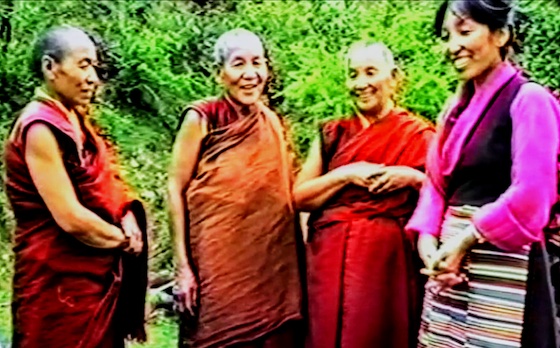
Photo from around 1985 of the senior nuns at Geden Choeling Nunnery. Venerable Thubten Lobsang is on the right next to Rinchen Khando Choegyal, founder of the Tibetan Nuns Project. Taken from Meridian Trust documentary “Two Tibetan Buddhist Nunneries”.
I met a man named Wangda and married him for love. At first, my parents didn’t know what l had done. They looked for me everywhere to bring me back and get me married to the officer’s son. They went as far as Kalimpong, India. I was staying with some relatives and they scolded me about all the problems I was causing my family. But since the man I had chosen for myself was also from a noble family, my relatives told me it was OK and that they would talk to my parents for me. After this my parents accepted my husband and even gave me my share of the inheritance.
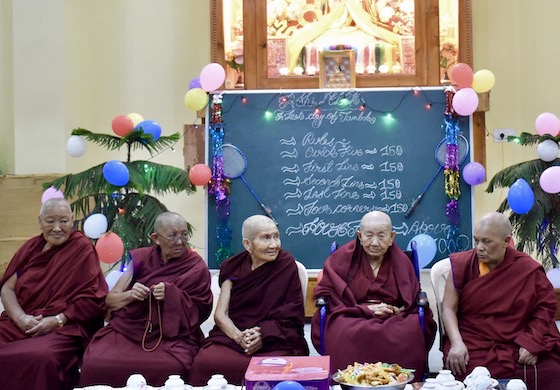
Celebrating the senior nuns at Geden Choeling Nunnery in October 2019. Thubten Lobsang (second person from the right) became a nun at age 48..
When I was 25 years old, I gave birth to twin boys but they both died. Then the Chinese came. My husband went with the resistance movement, Chushi Gangdruk and I was left alone. One day, a man came and gave me a message from my husband. He said, “Do whatever you want or need to do. I will fight until my live is sacrificed.” I tried to find information about him but couldn’t hear anything definite although I did hear he was in pnson.
I was very unhappy then. I thought it might be better to go to India because I heard that many lamas and other people had been put in prison. My family and I thought that all of their things and their land would would be taken by the Chinese soon. I went to a lama and had a divination done, asking if it would be good for me to go. He told me not to think about my possessions, but only about my mind. He told me it would be very successful if I went to India. I gave all of my things to my friends and family. I also went to a female oracle, Upchee Lhamo, who said I should go. The oracle gave me blessed barley seeds to wear in an amulet around my neck and to scatter wherever I went.
Before I decided to leave things were very bad. Many lamas were caught by the Chinese. Getting a visa was very difficult, however there was a Nepalese man in Lhasa, the representative of the Nepal embassy. I had travelled twice to Mt. Kailash with him and his wife. He arranged for me to get a Sherpa visa. He was a noble-minded man and helped many people.
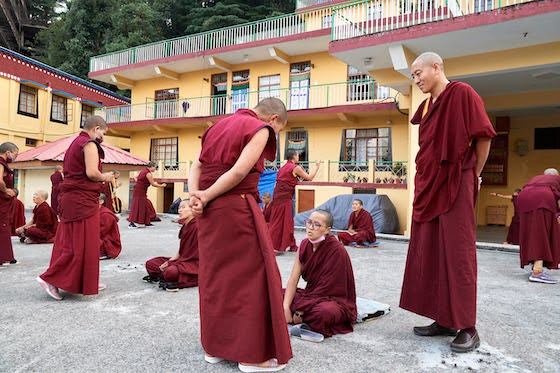
Nuns practicing monastic debate at Geden Choeling Nunnery in May 2022. The nunnery founded in 1973 and whose name means “Home of the virtuous ones who devote their lives to the Buddha Dharma” is now home to about 200 nuns. Photo courtesy of Olivier Adam
Greater difficulties arose because one needed to get both a Nepalese and a Tibetan stamp for the visa. This, along with getting a bus ticket, took two and a half years. I got a bit anxious again and went up to the hill of Chokpori, where the hospital was, to light incense. But the Chinese had set a trap there. Under the burning box they had put some kind of wires that told them if something was being done there. Three men came and pulled me down the hill, shoving bayonets into my back. (My back is still painful to this day.) Then I thought it would be better to die. My brother had been put in prison and my father had been beaten to death. I felt totally alone and thought constantly of my relatives, worrying and feeling sick.
I stayed for a while in a rented house in Lhasa. The owner was very helpful and I got a bit better. She advised me to sell my jewelry and get out of Tibet using that money. I did this and my Sherpa friend finally got me the tickets.
I came through Kalimpong where I met Lama Gonesey. He took me to Varanasi but I couldn’t stay there long because it was so hot. So with his help I went to another place called Sukay, up in the hills. Then I went to Varanasi again and then to Dharamsala. In Dharamsala, I gave birth to a son who became a monk in Namgyal Monastery. I went to do road work, earning half a rupee per day. I did this work for many years.
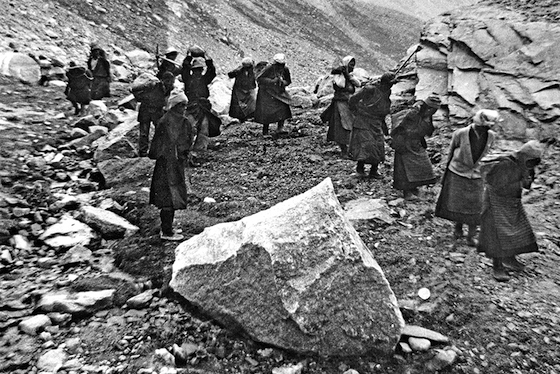
Before she became a nun, Thubten Lobsang was a road worker for many years. It’s estimated that 20,000 Tibetans refugees worked in these road construction sites in the 1960s. They broke stones by hand and it was an extremely hard life. Photo from the Tibet Museum exhibition “Journey in Exile- 1960s”
I became a nun when I was 48 years old, the year before the unlucky year for women (age 49). I had been very sick and went to Lama Tenzin Gyaltsen in Kinnaur to ask for his prayers. Without doing a divination he told me that if l become a nun it would save my life. I asked him how I could do this since I had no resources to support myself and no education. I felt I knew nothing about the Dharma. He said, “Being wealthy does not bring you enlightenment, the same is true of education. The most important thing is to help other people and to never cause harm. If you become a nun and do these things it will remove all your obstacles.”
I took vows and ritually offered my hair to Ling Rinpoche and went to live at Geden Choeling Nunnery. I did a lot of nunnery work until I was 62 years old and then I was allowed to retire from kitchen duty and so on. Then I spent my days completing the practices for the vows and initiations I have taken. I completed the preliminary practices and I recite the refuge mantra each morning and then the 36 names of the Buddha. Then I do prostrations and mandala offerings, as well as a recitation of the Yamantaka text (5 pages) and others. I visualize Tsongkhapa and Tara and then recites more mantras and mani. It takes a long time.
[Story told in July 1993. Interview done by JoAnn Vrilakis, Yankyi Tsering translating.]
Venerable Thubten Lobsang could manage by herself until she was 71. After that she couldn’t attend any of the nunnery activities as she could not walk because of severe leg problems. From that point on, two younger nuns took turns to care for her including changing her clothes and bedding, massaging her with herbal oil and cream, and changing her body position frequently to avoid getting bed sores.

Venerable Thubten Lobsang holding saying mantras with her mala in 2013. Photo by Brian Harris
During the COVID lockdown (2020-22) she started losing her memory and couldn’t eat solid food and fruits. Finally, she passed away peacefully on February 23rd, 2023, the second day of Losar or Tibetan New Year. She lived to a grand age of 105 years. She was much loved and cared by all the nuns who treated her like a mother.
We pray for her peaceful soul!


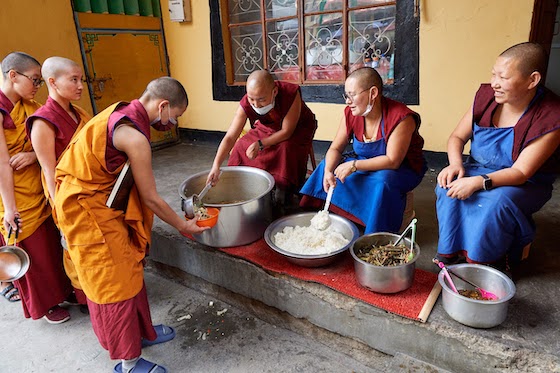
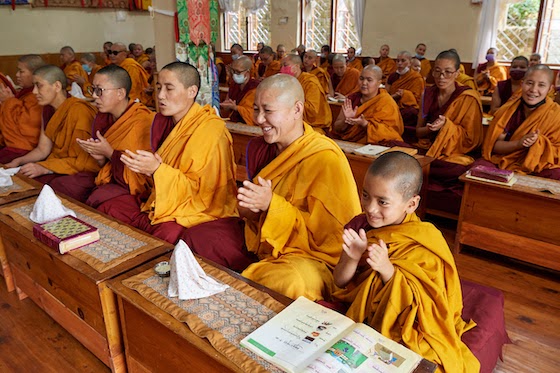
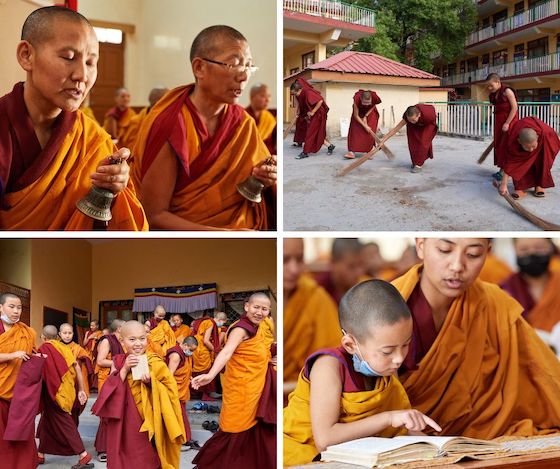
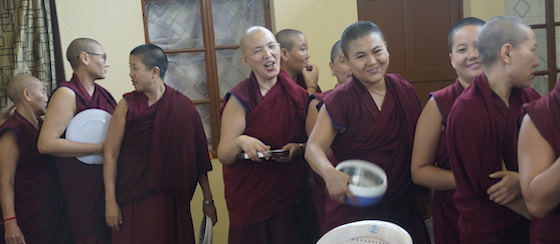
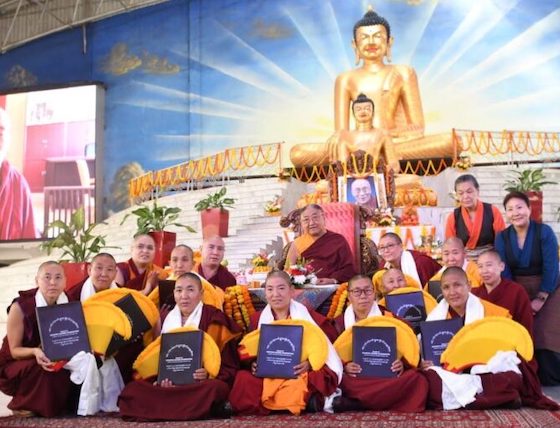
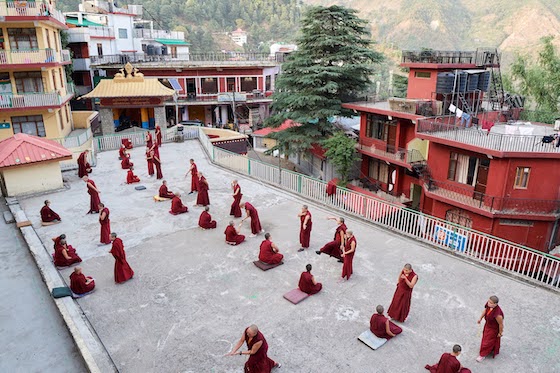
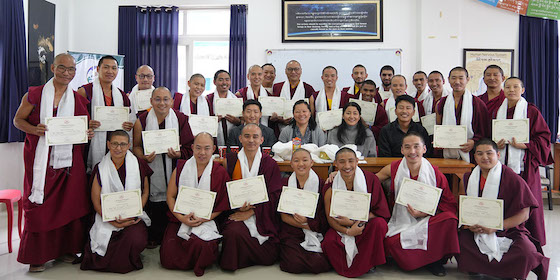
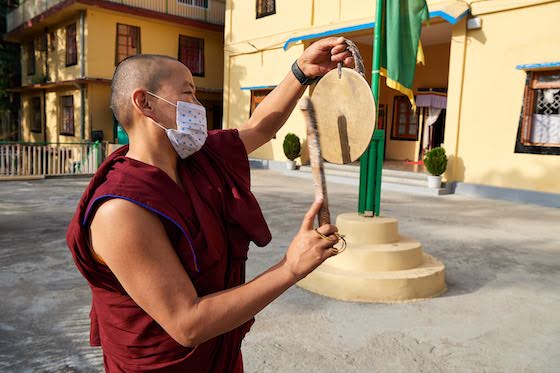
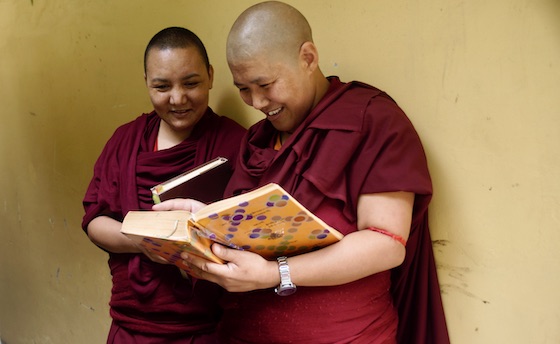
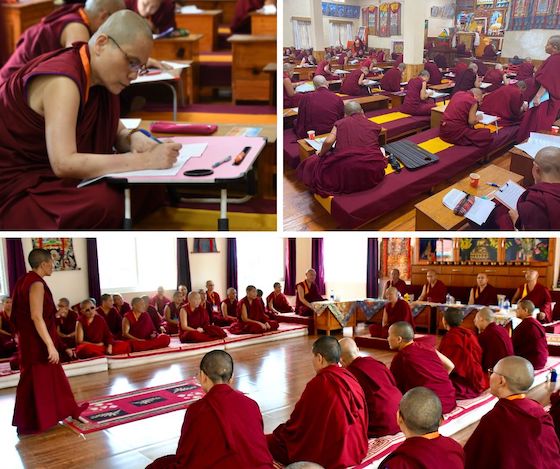
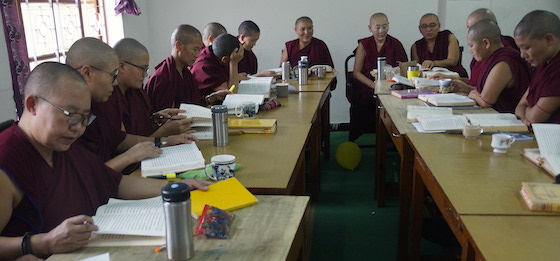
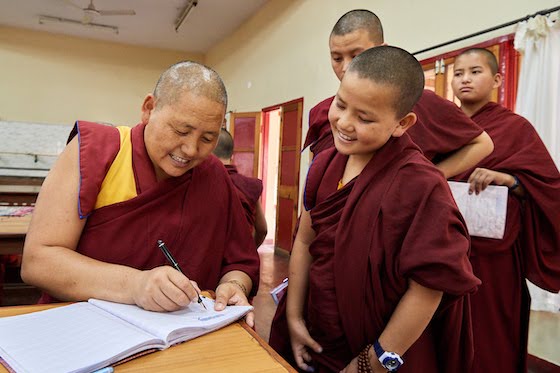
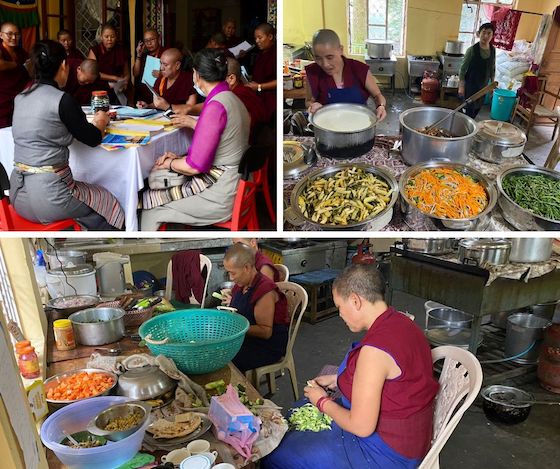

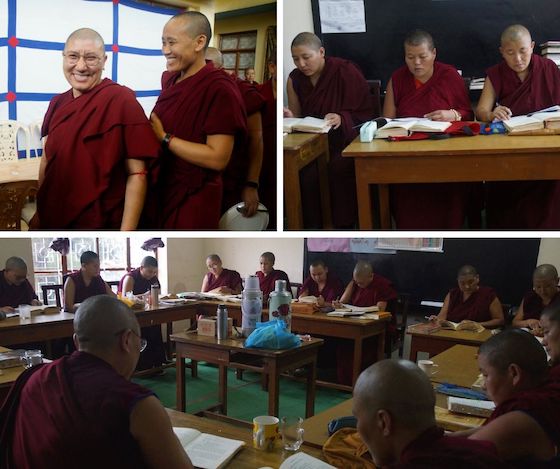
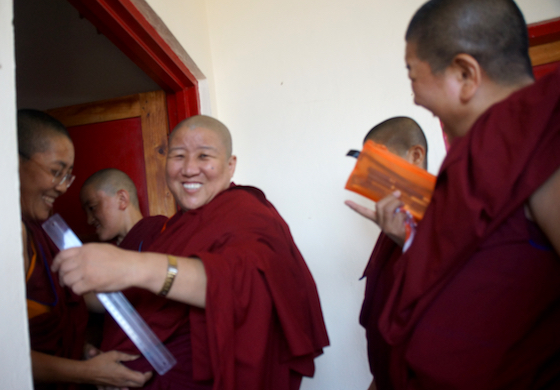
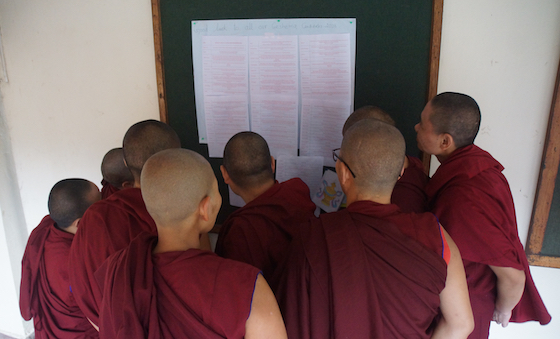

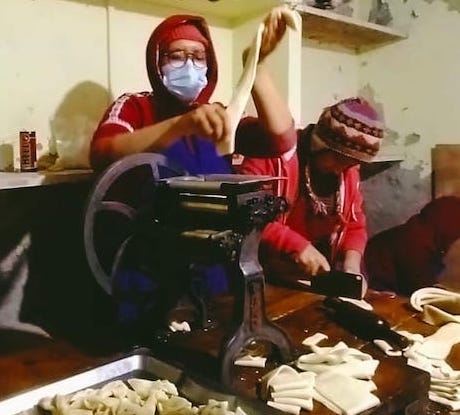
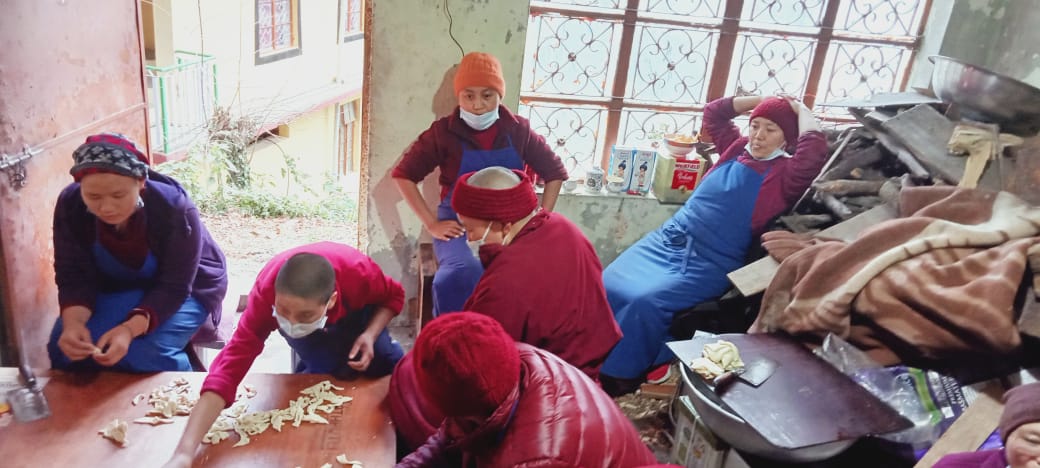
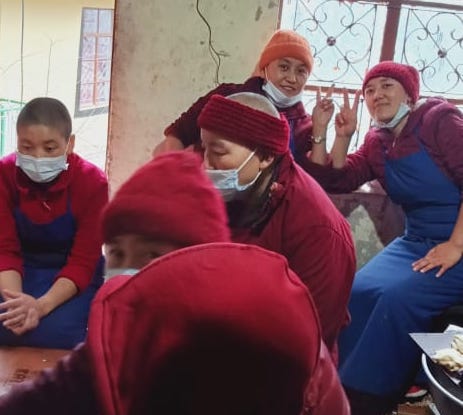

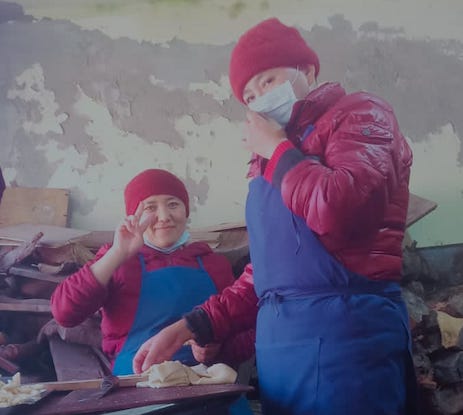
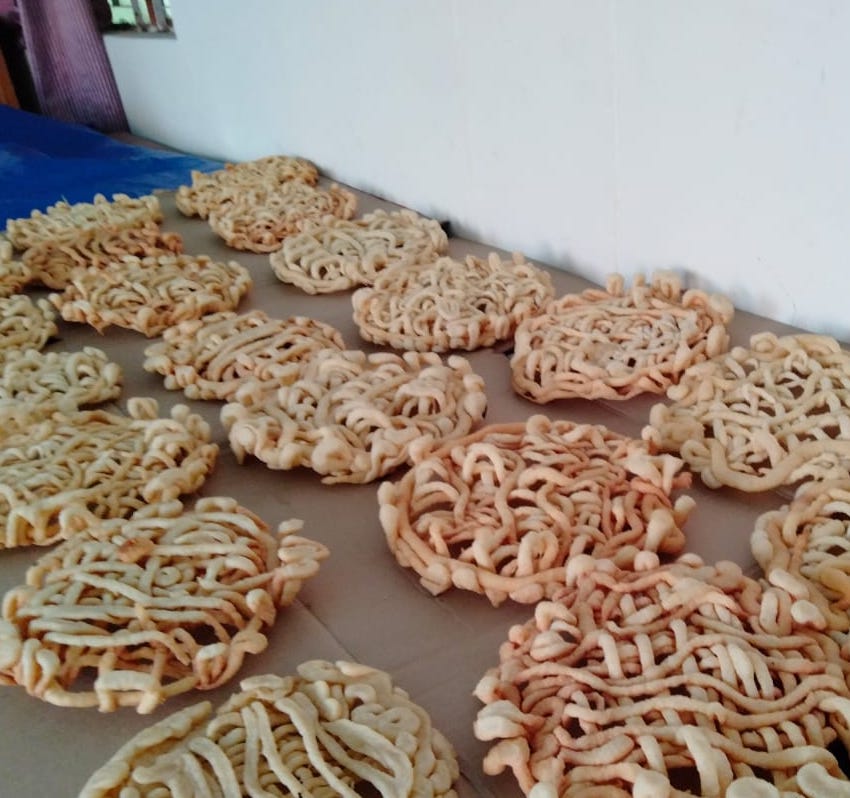
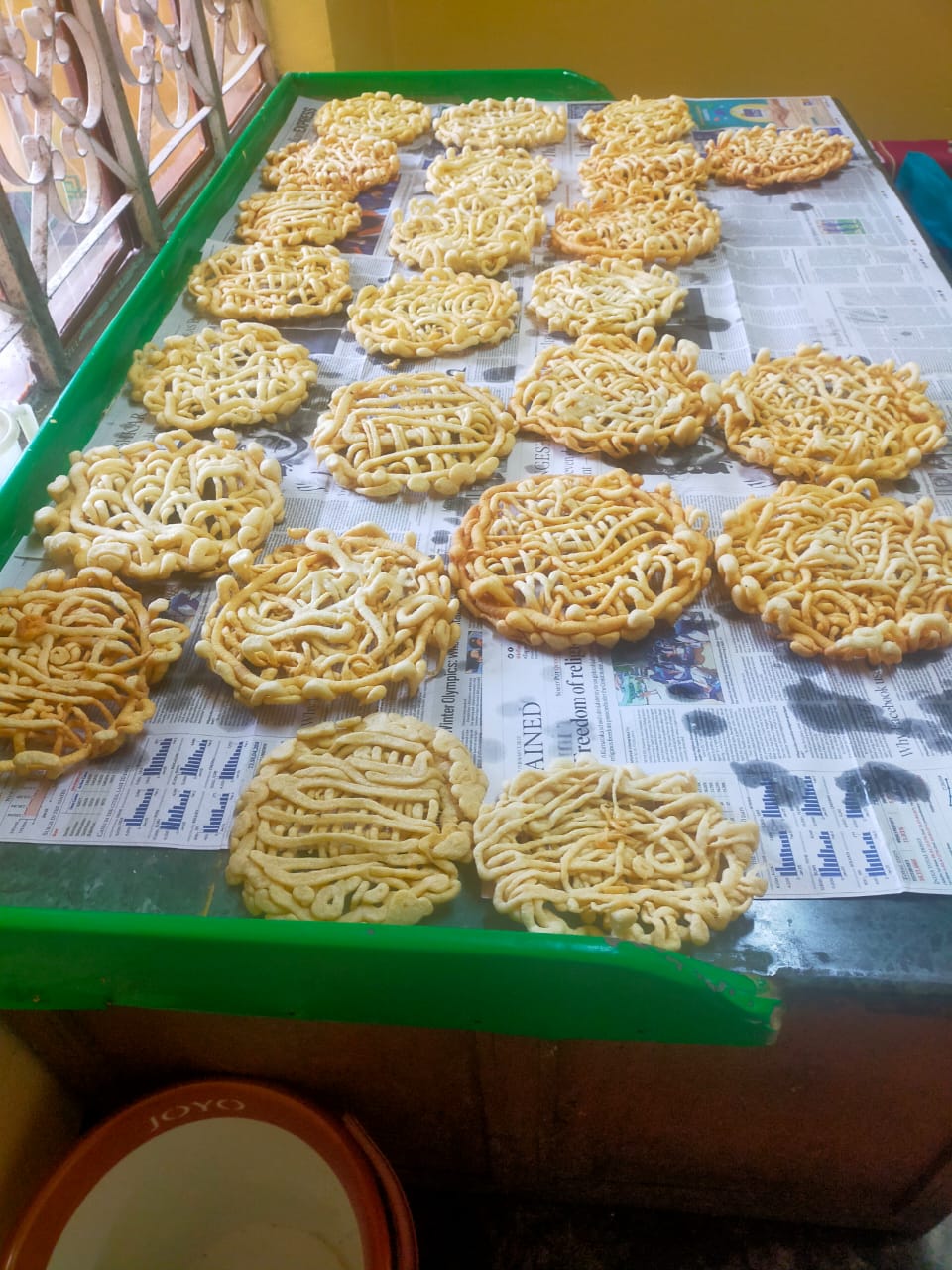
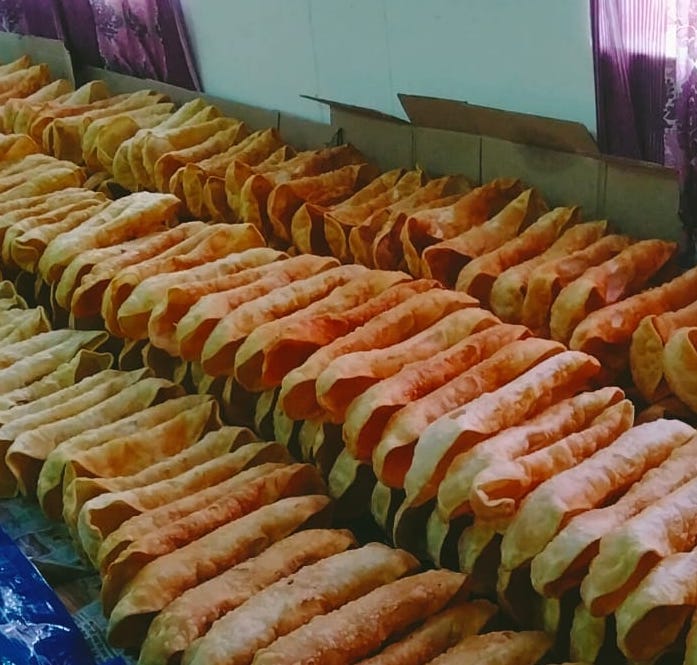
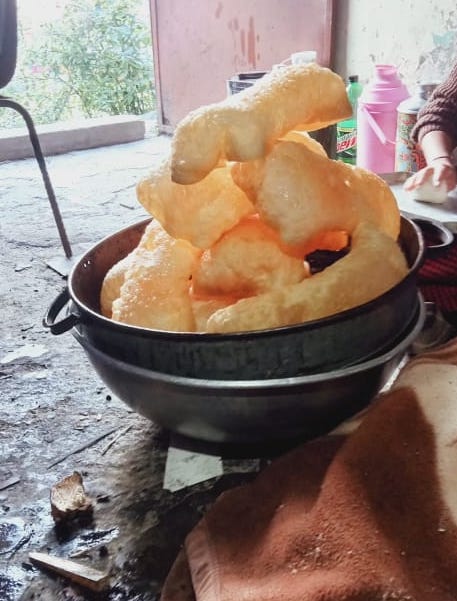
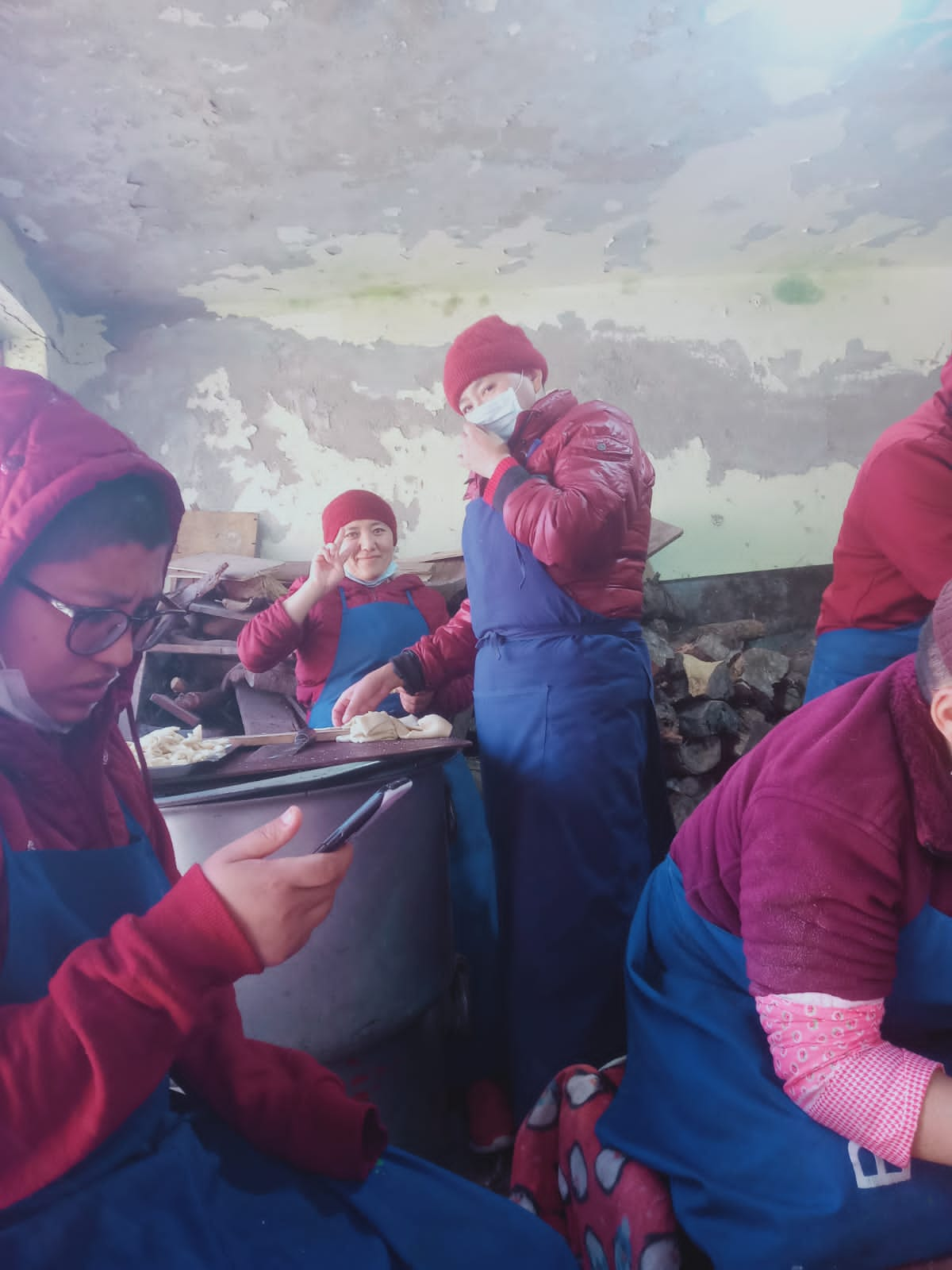





































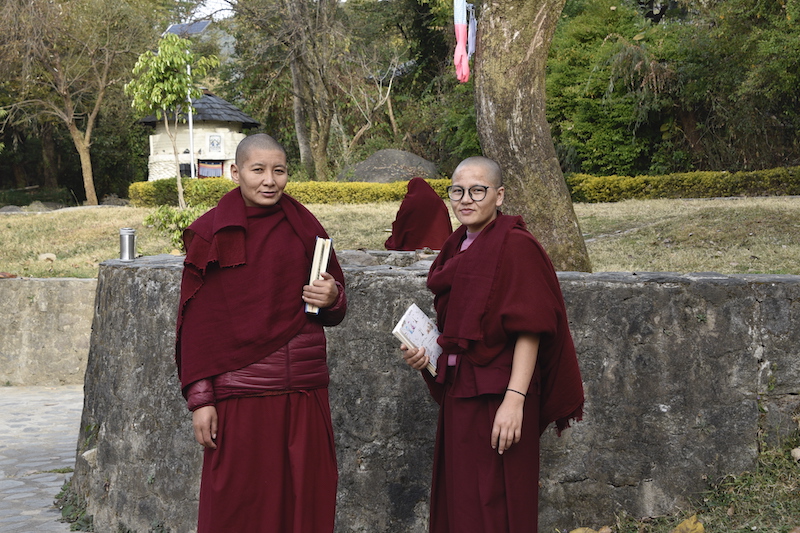
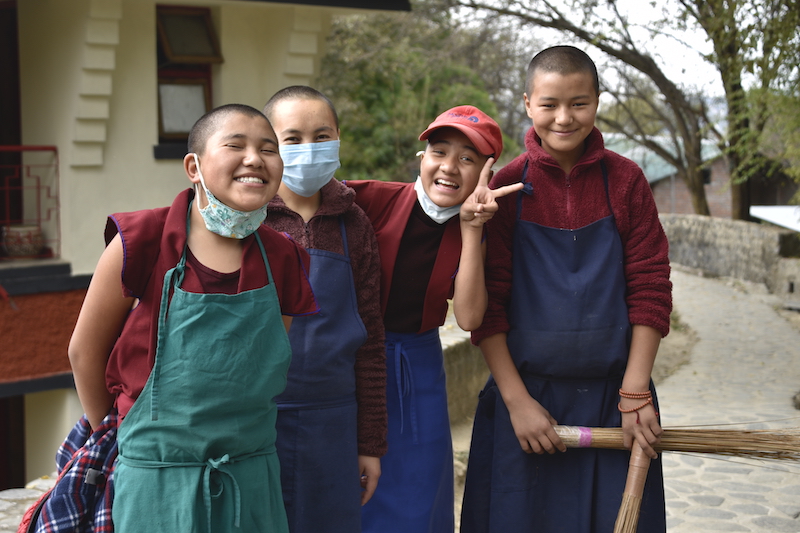
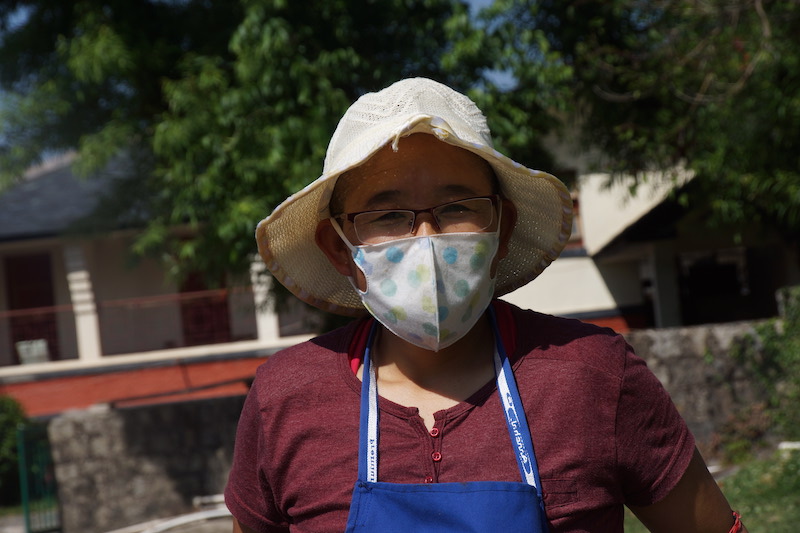
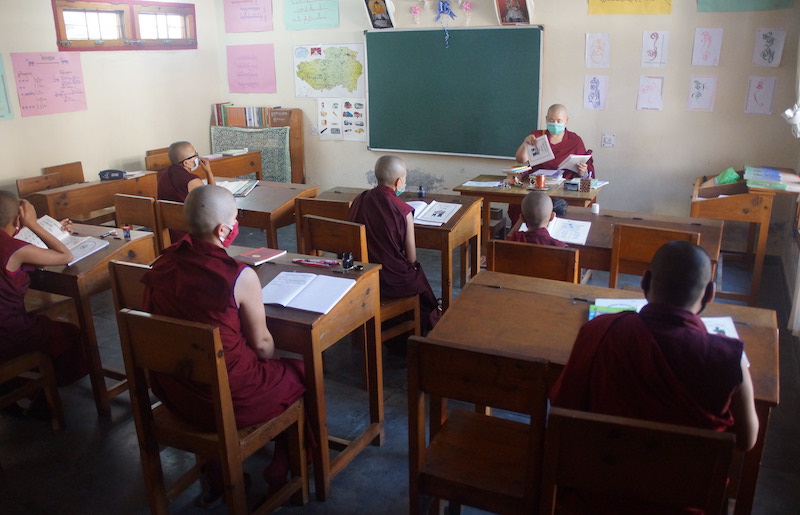
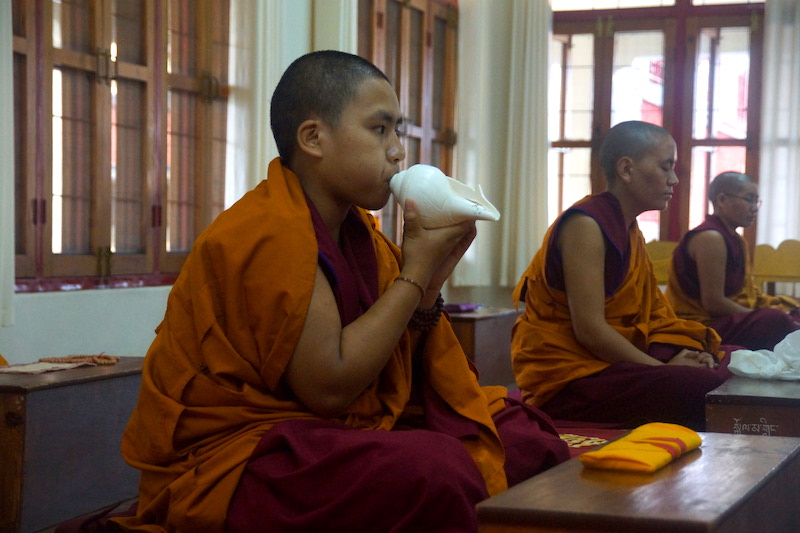

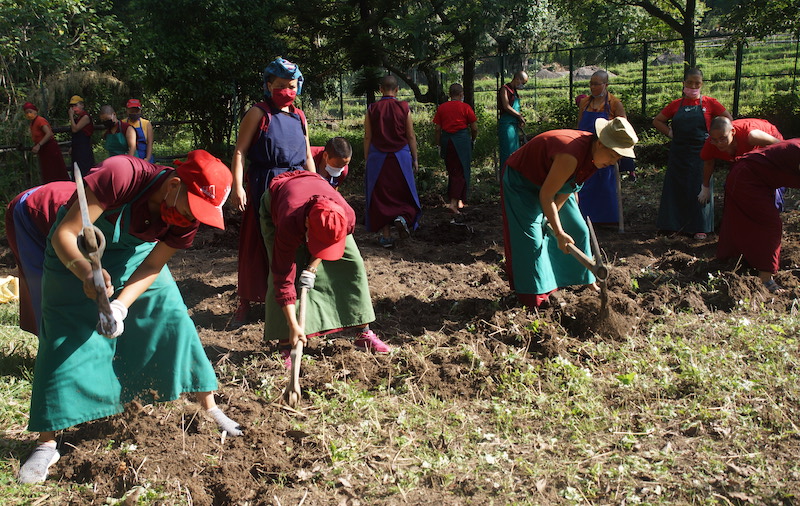
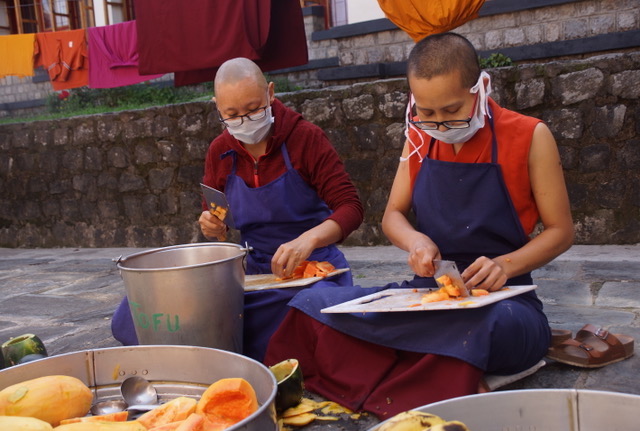
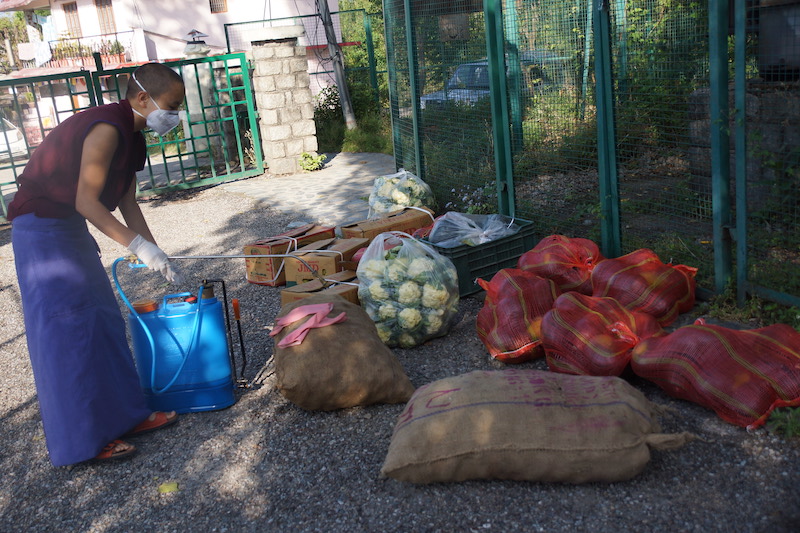
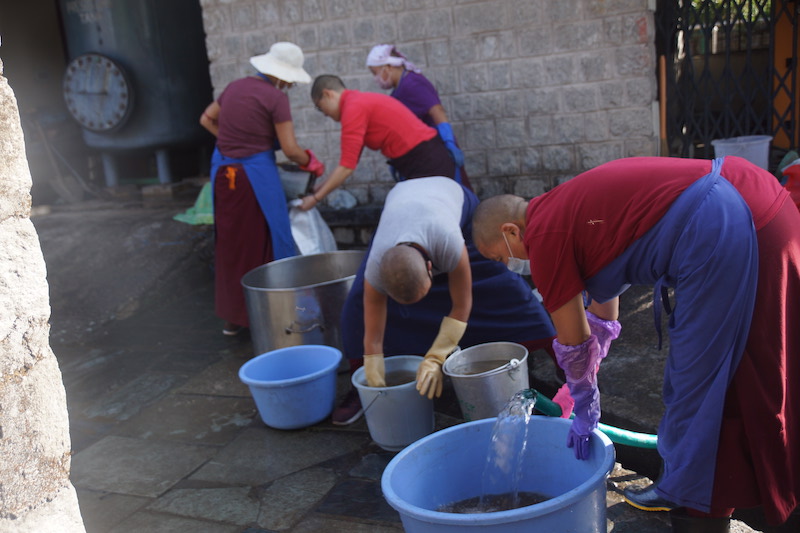
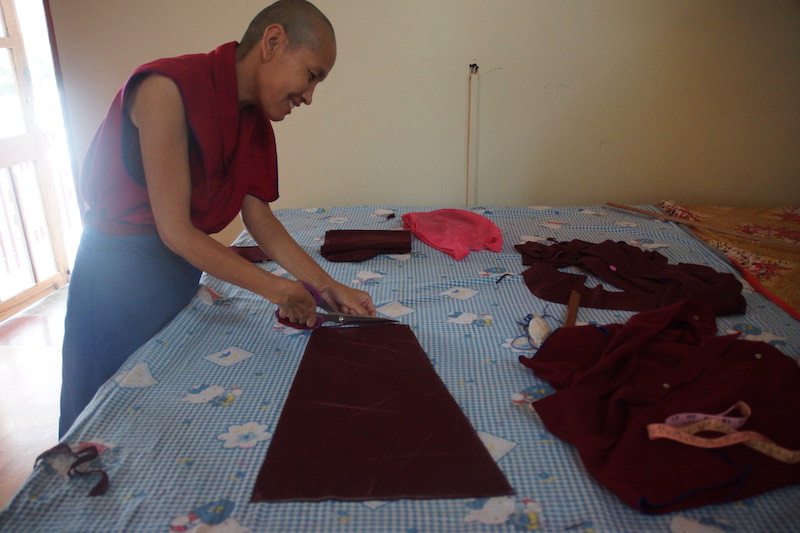

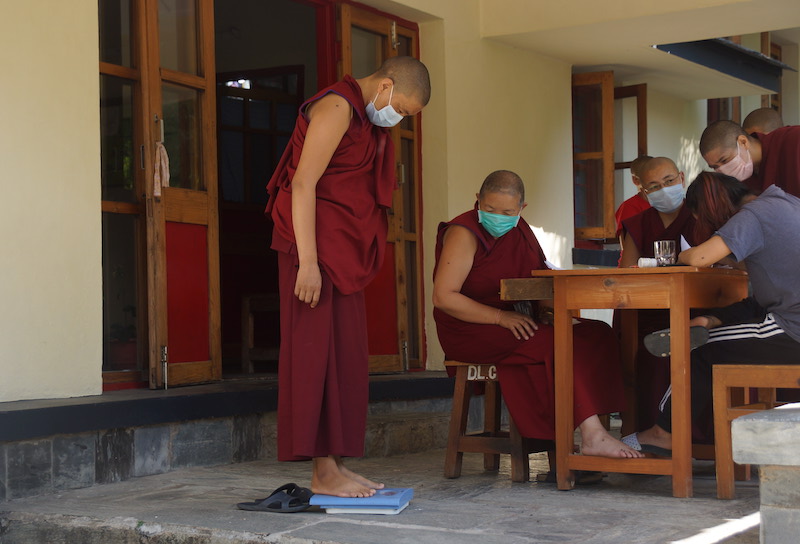
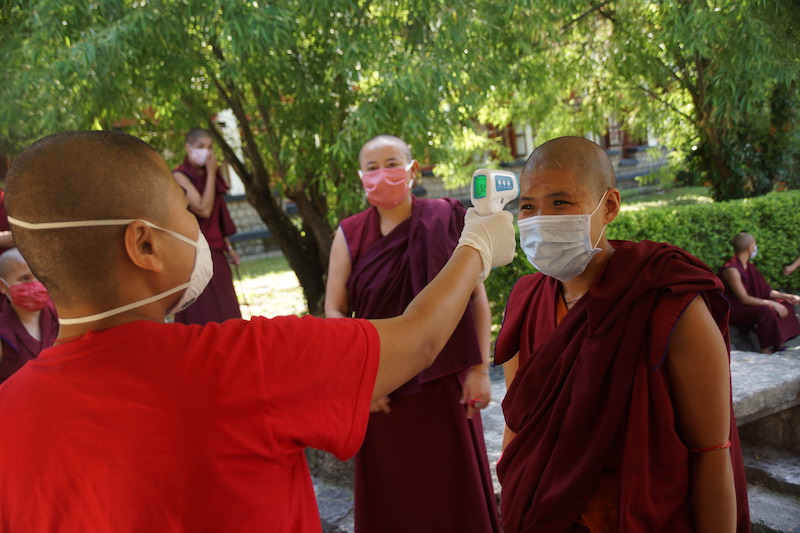
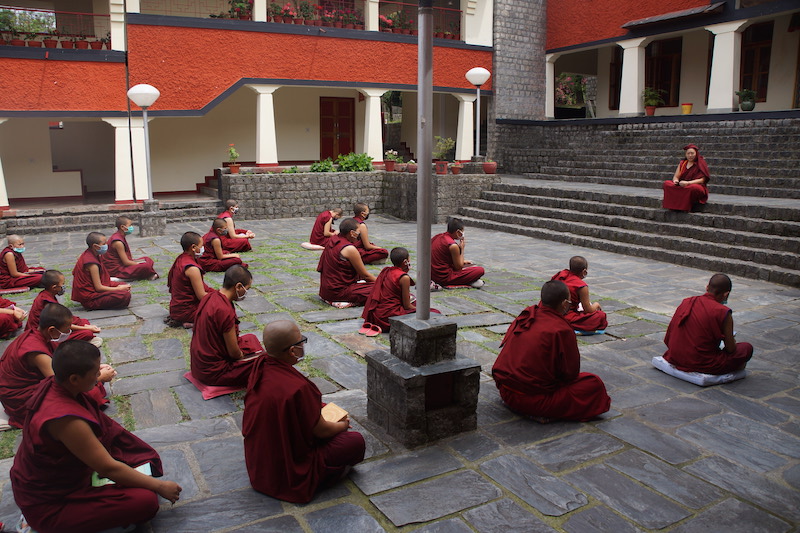
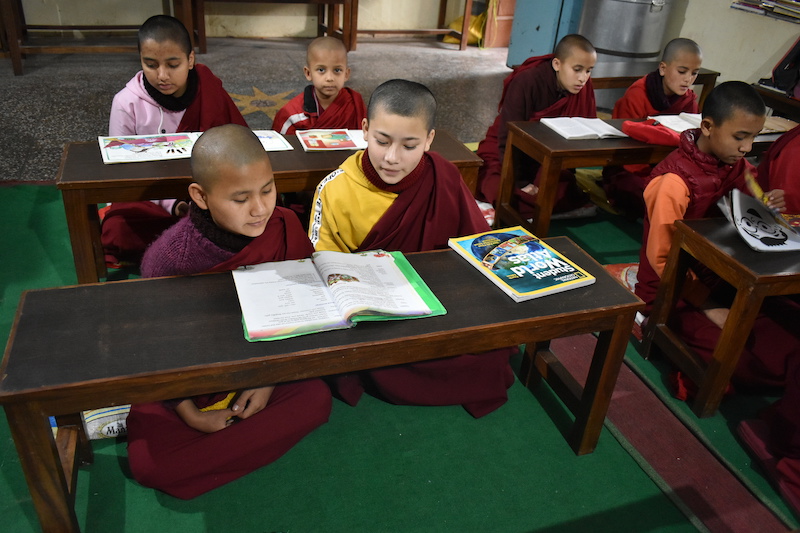
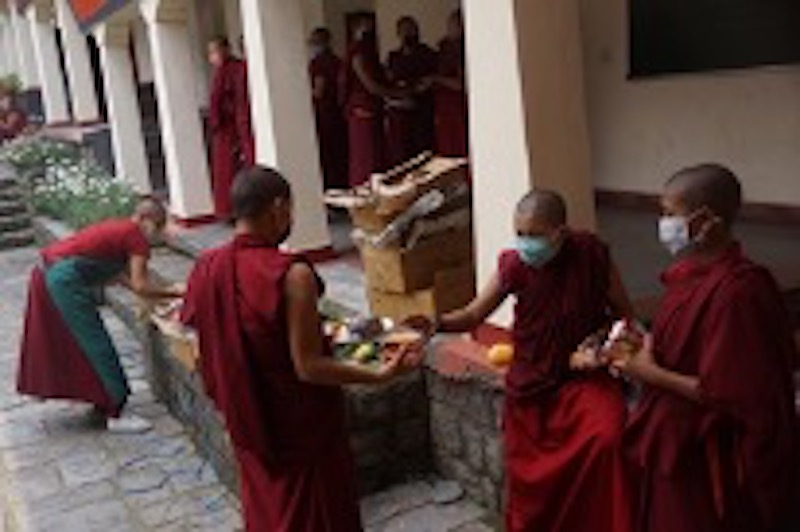
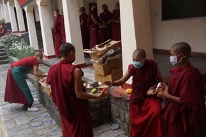
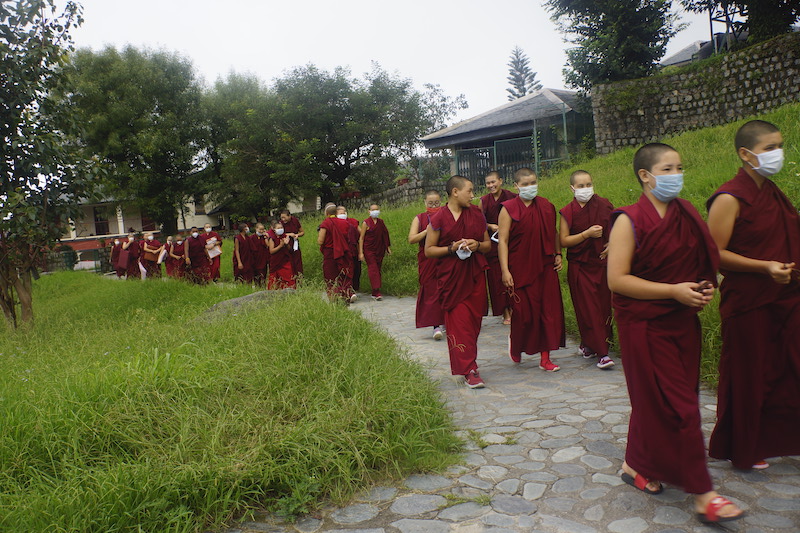
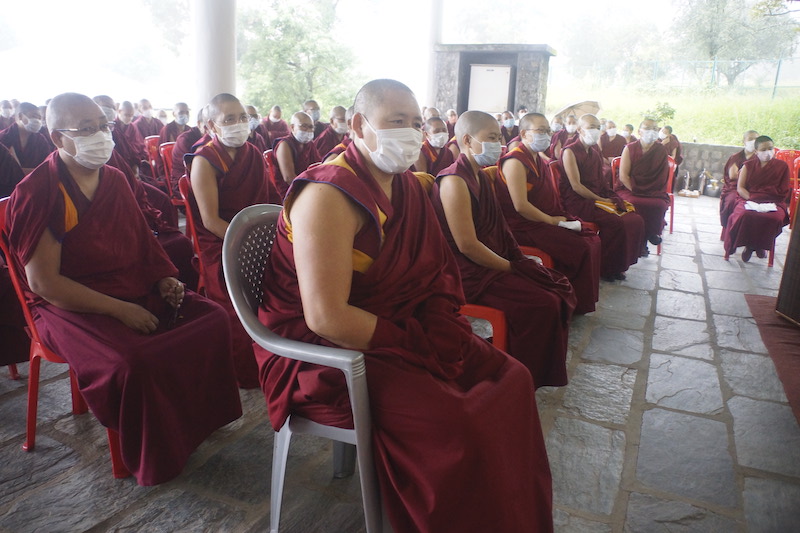
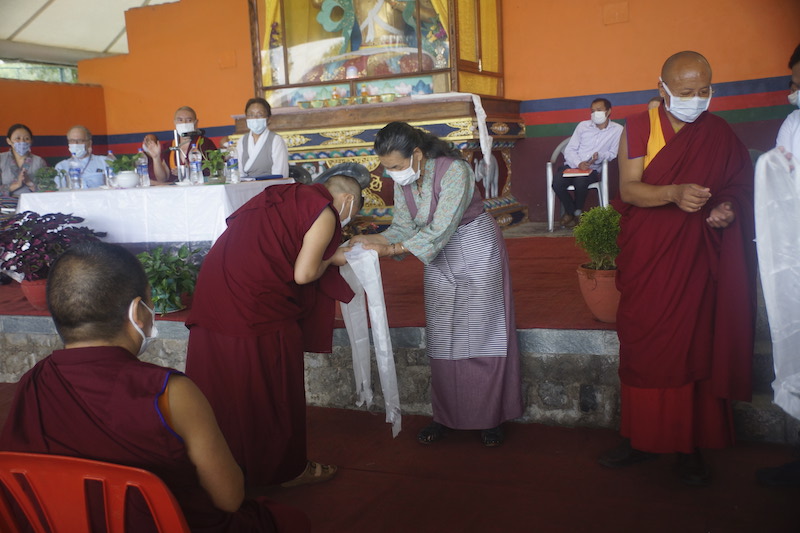
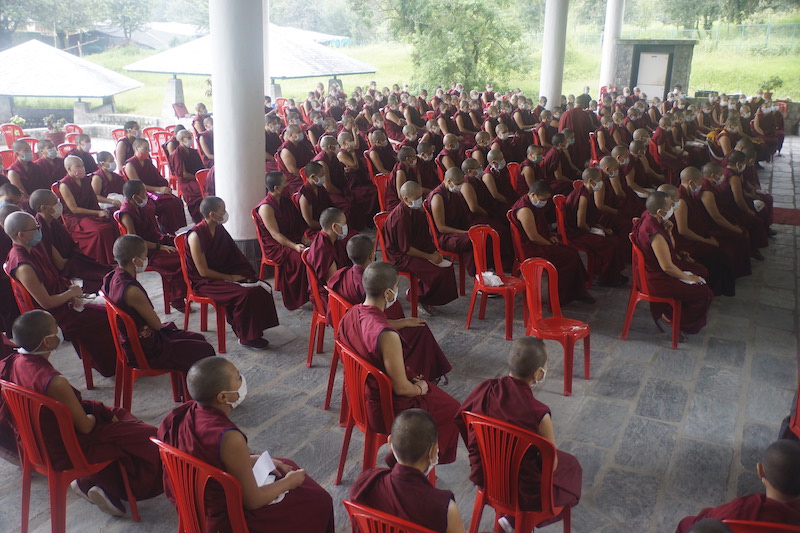
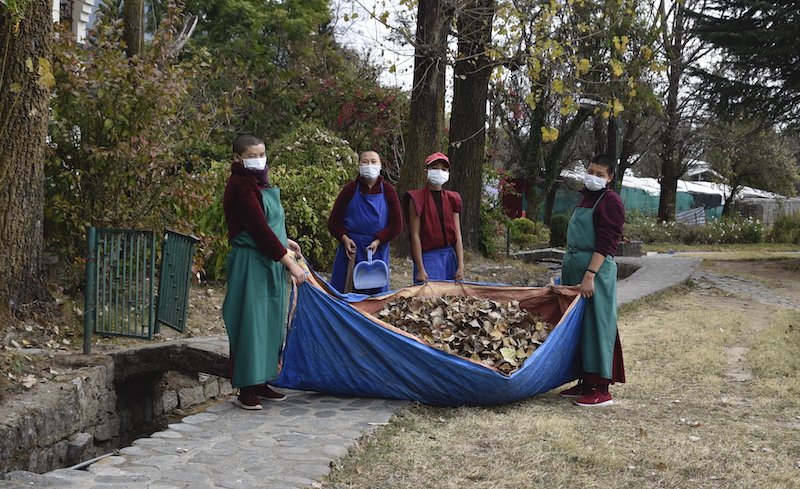
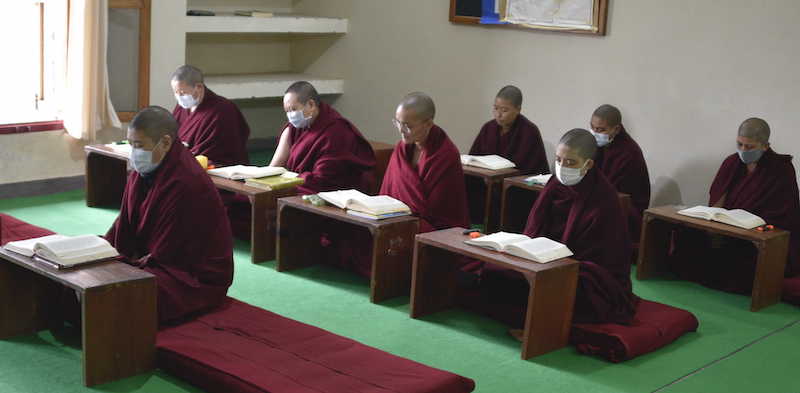
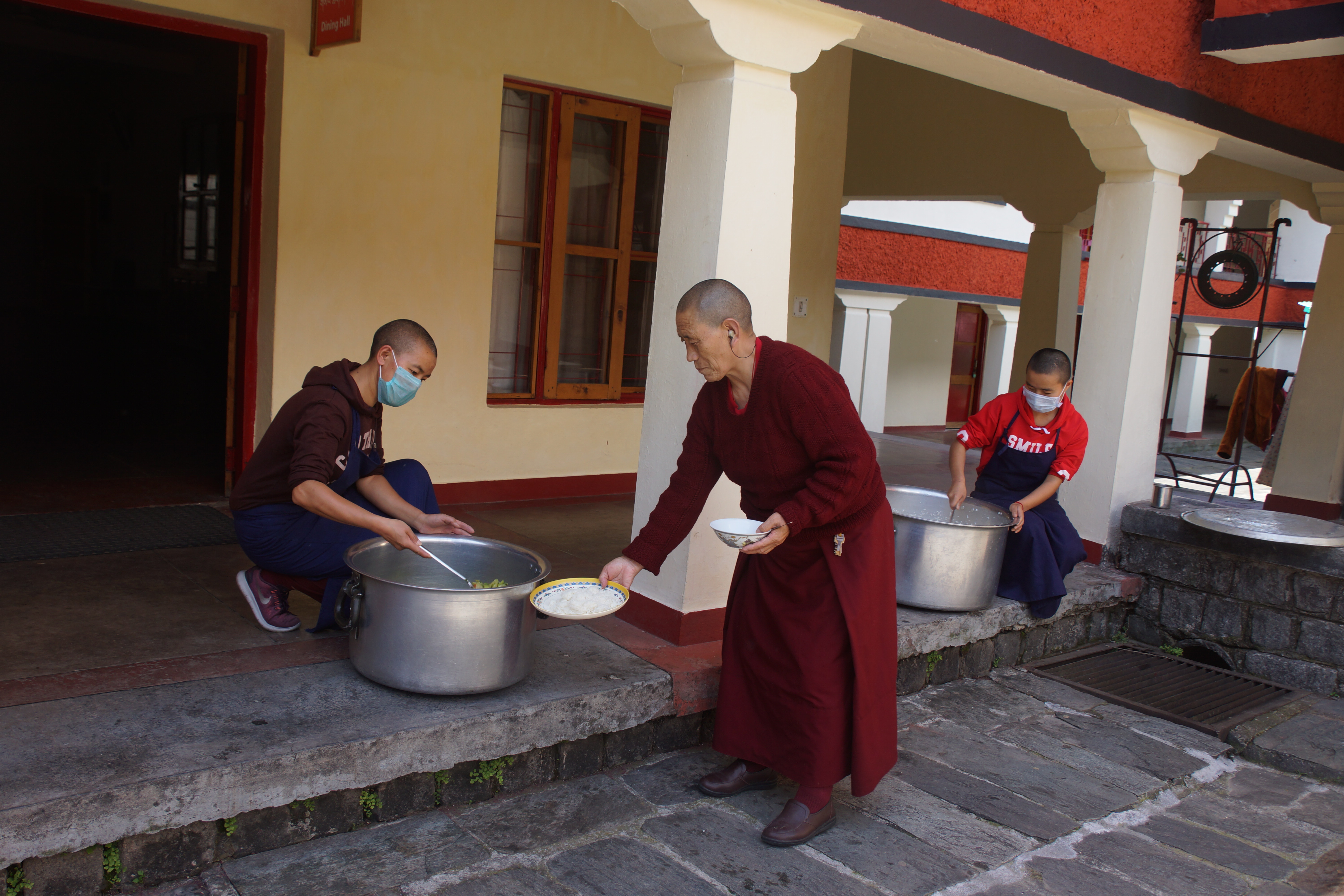
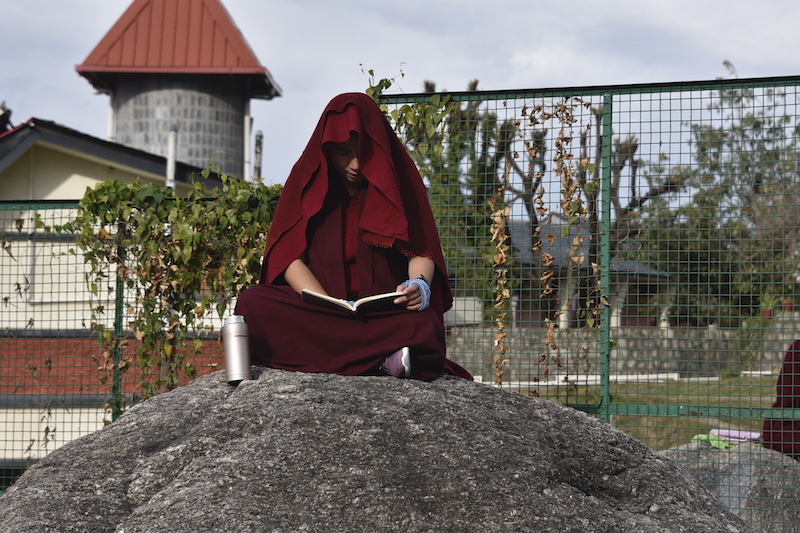
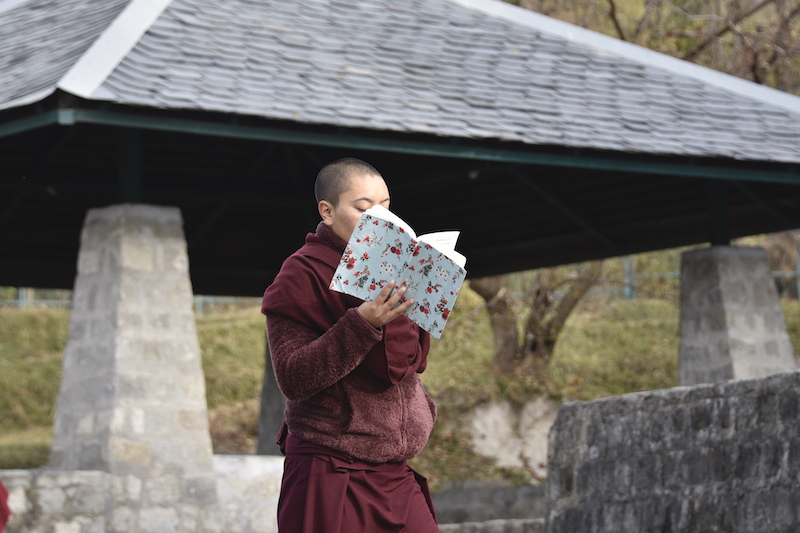
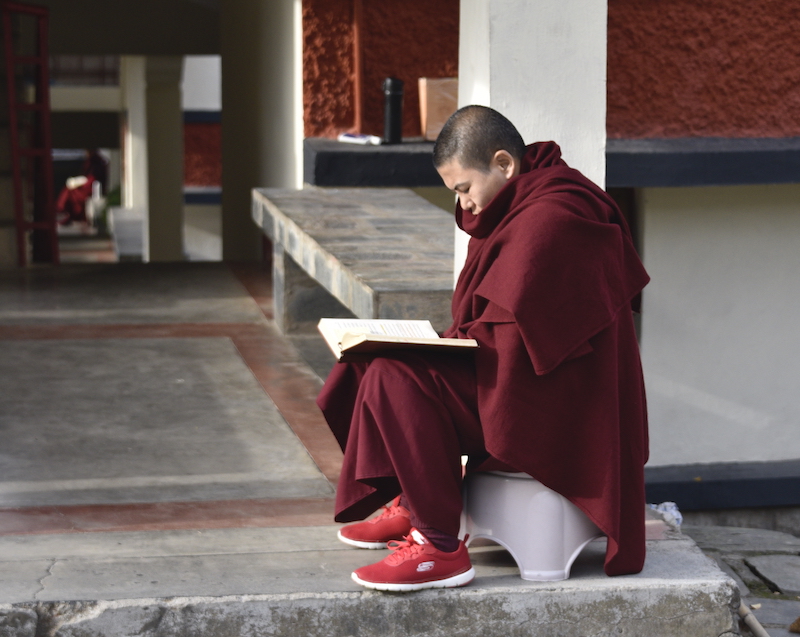
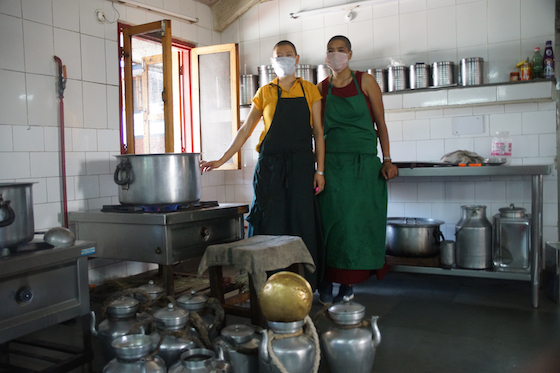
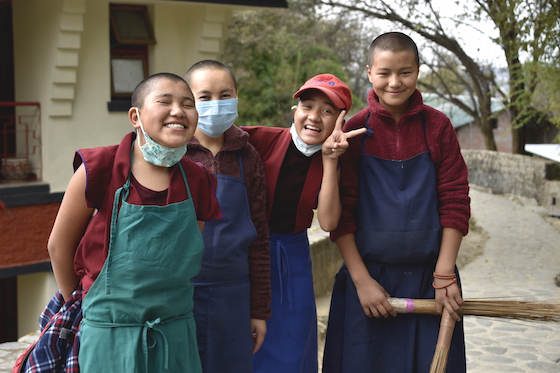
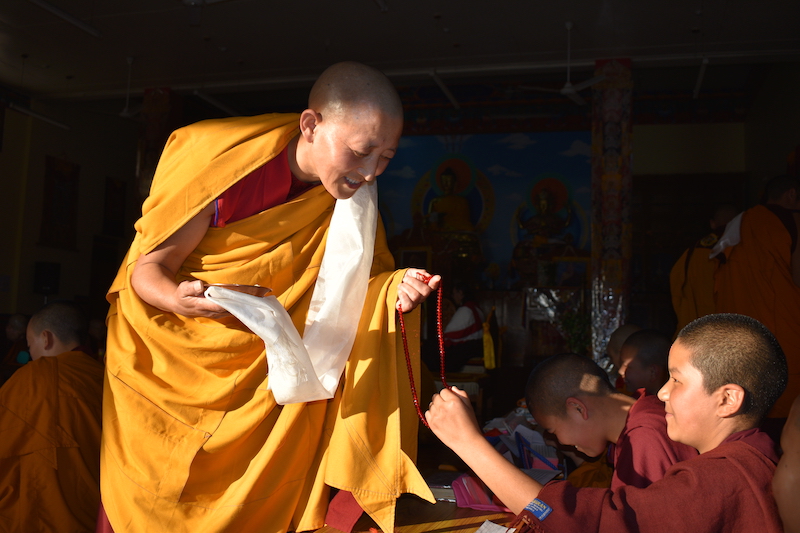



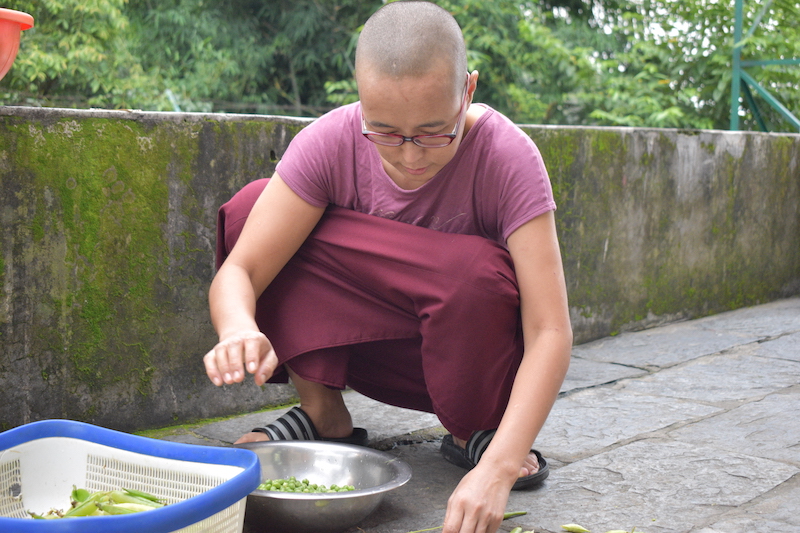



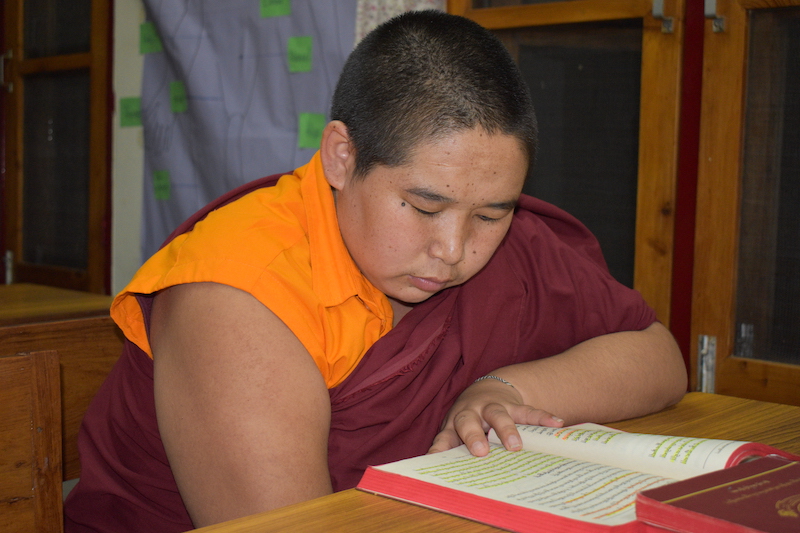
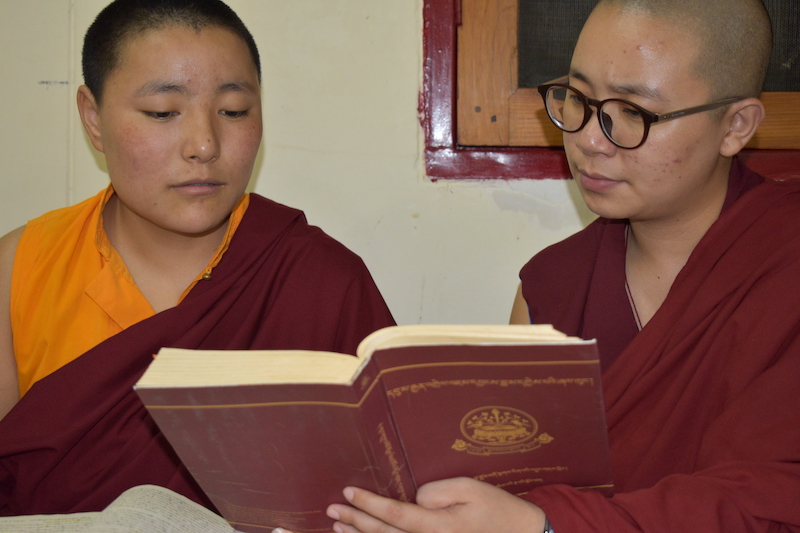

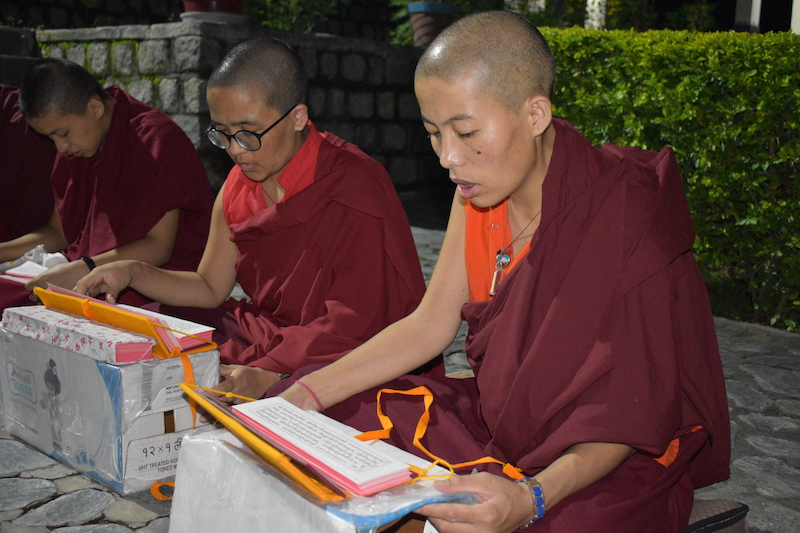
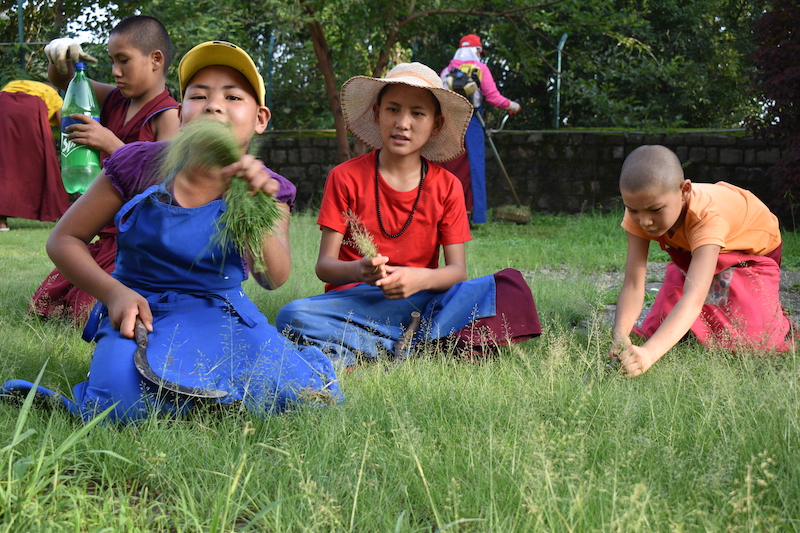
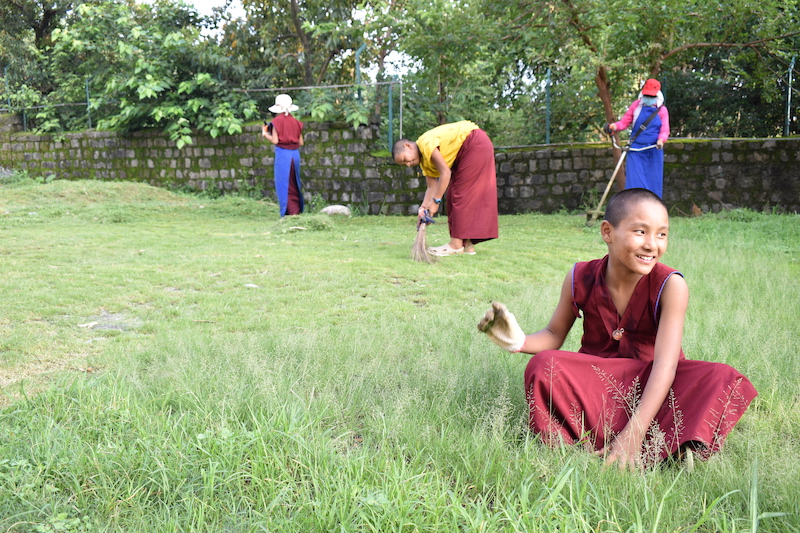

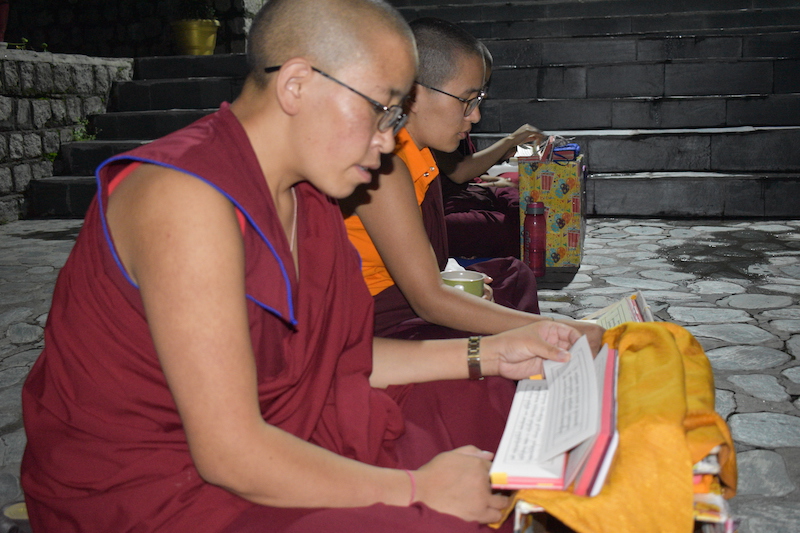
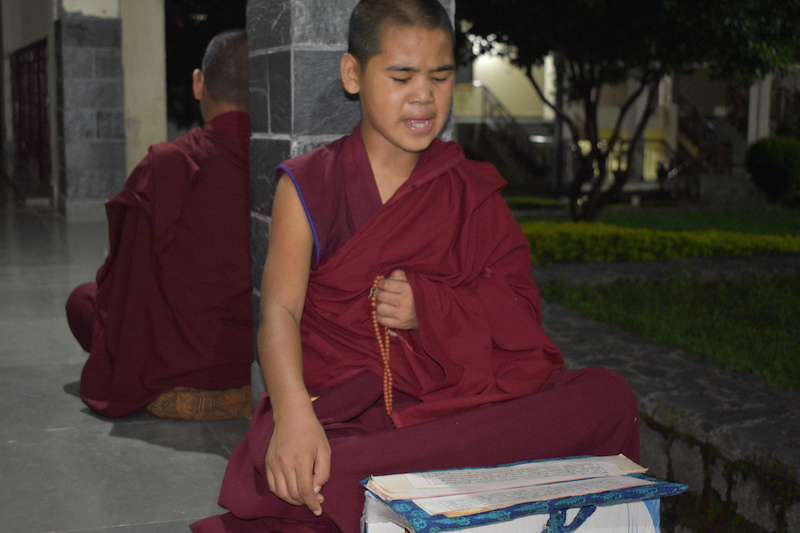
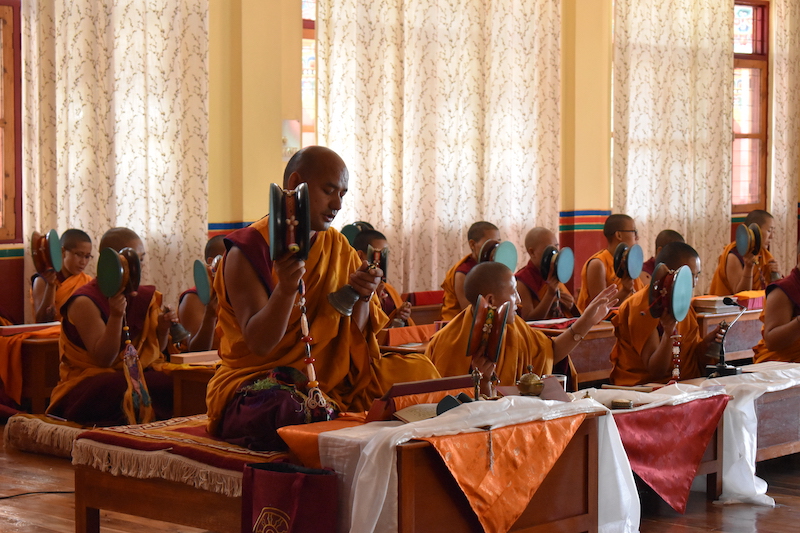
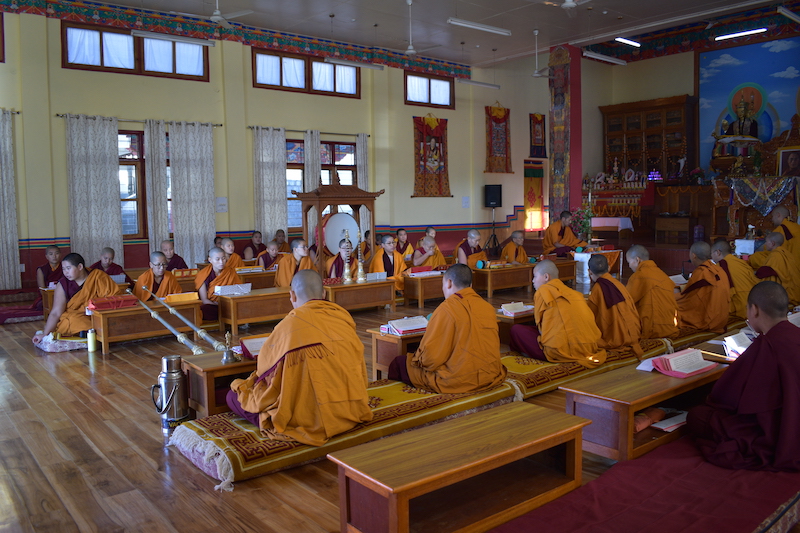
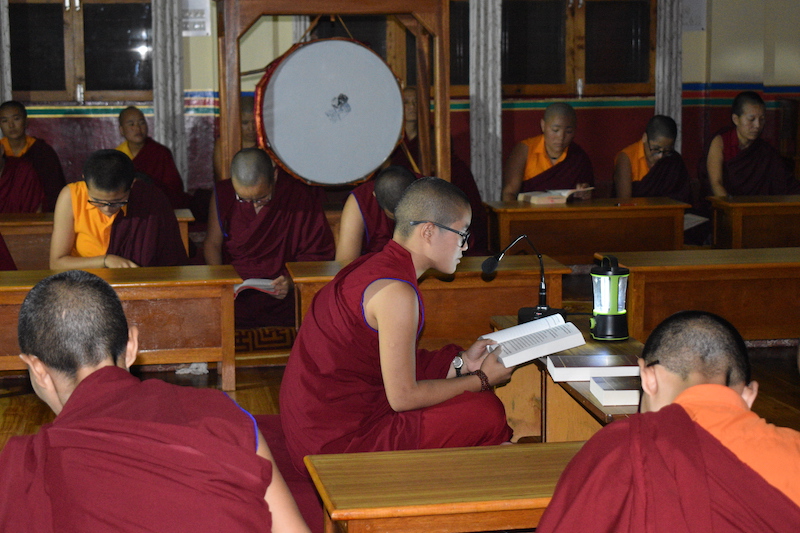
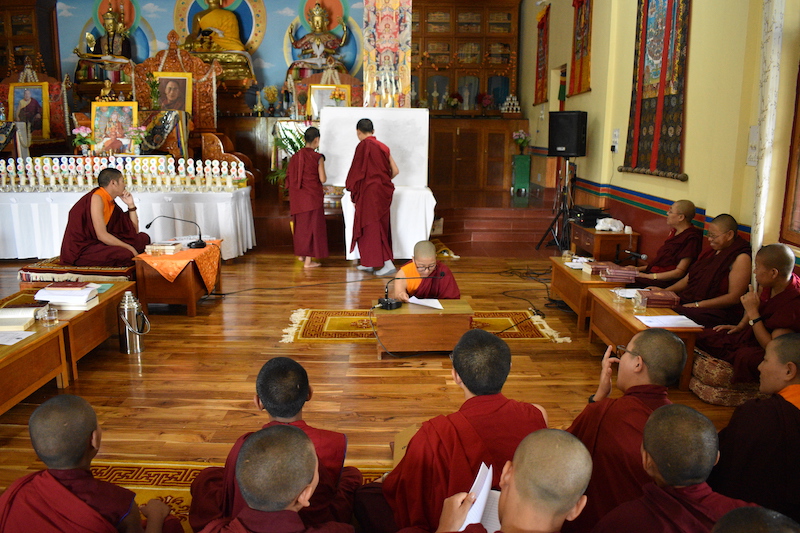
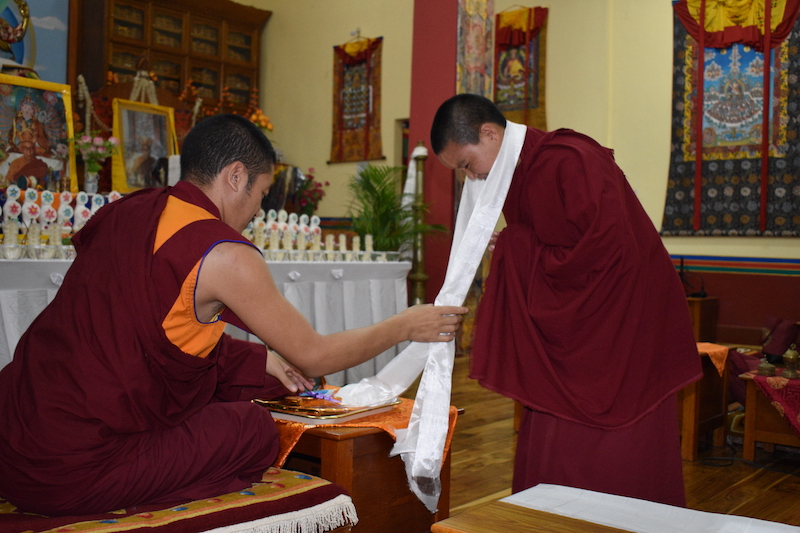
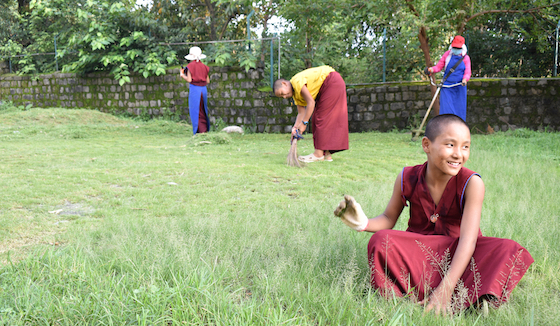 To prevent the disease from spreading inside the nunnery, we shut the gate to visitors and all the transactions for prayers were done online. We had the basic necessities delivered to our gate so that we could stay isolated. We also barred the staff and students from leaving the nunnery grounds until and unless it was urgent. Weekend outings for the students were cancelled and the staff were strictly instructed not to leave the premises without permission.
To prevent the disease from spreading inside the nunnery, we shut the gate to visitors and all the transactions for prayers were done online. We had the basic necessities delivered to our gate so that we could stay isolated. We also barred the staff and students from leaving the nunnery grounds until and unless it was urgent. Weekend outings for the students were cancelled and the staff were strictly instructed not to leave the premises without permission.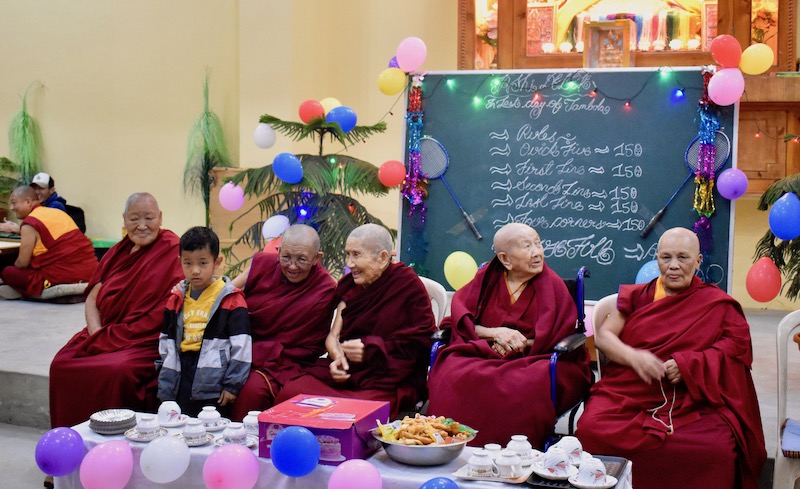
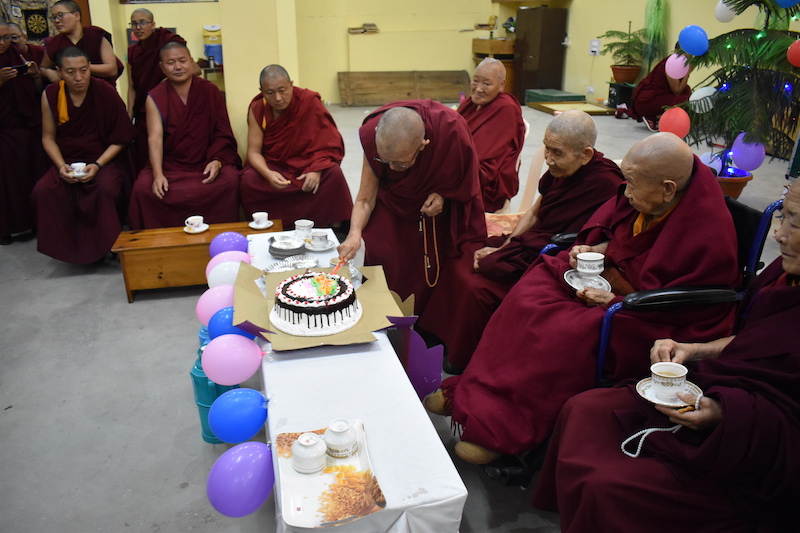
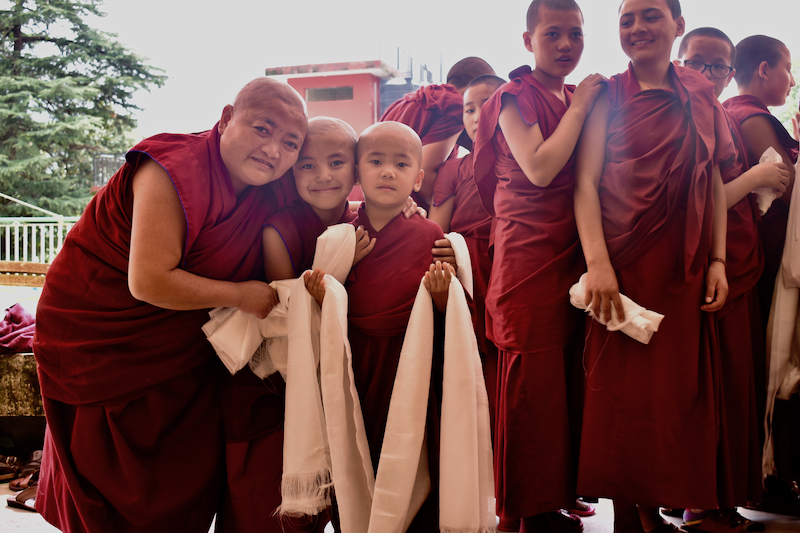

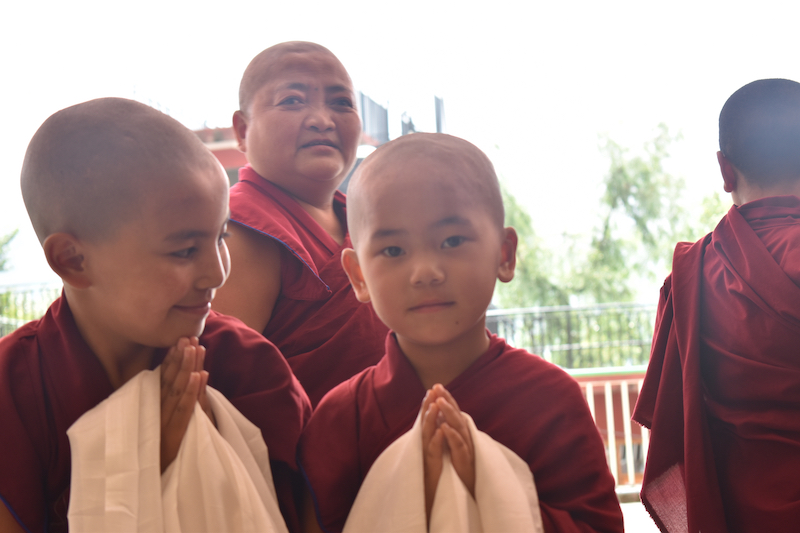
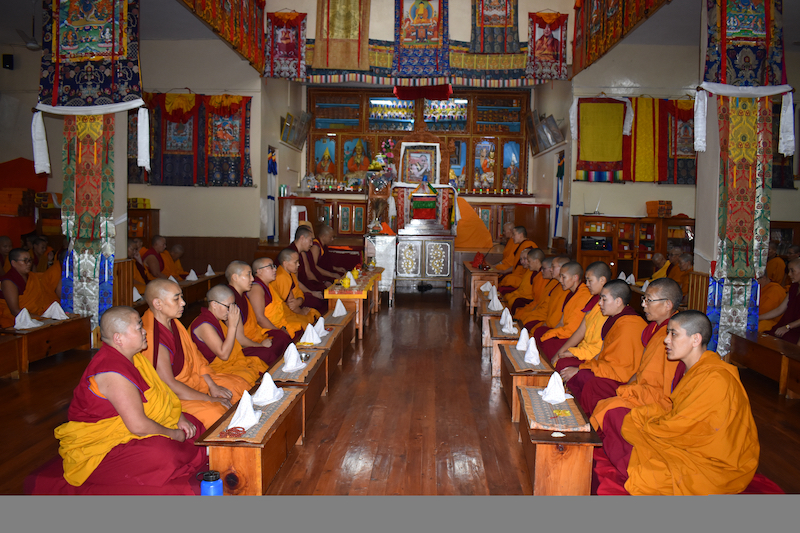
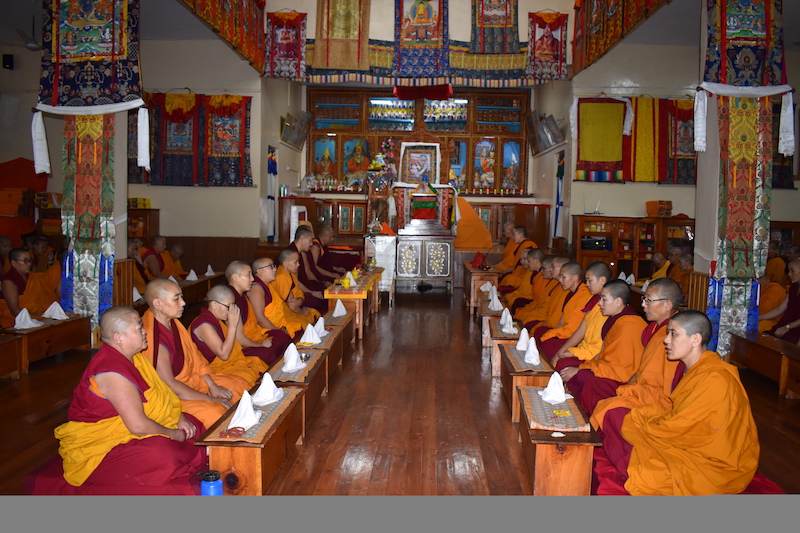
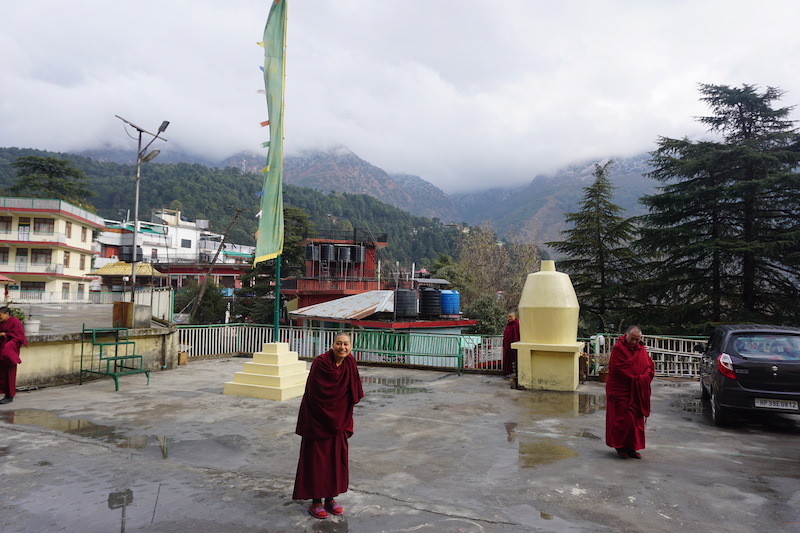
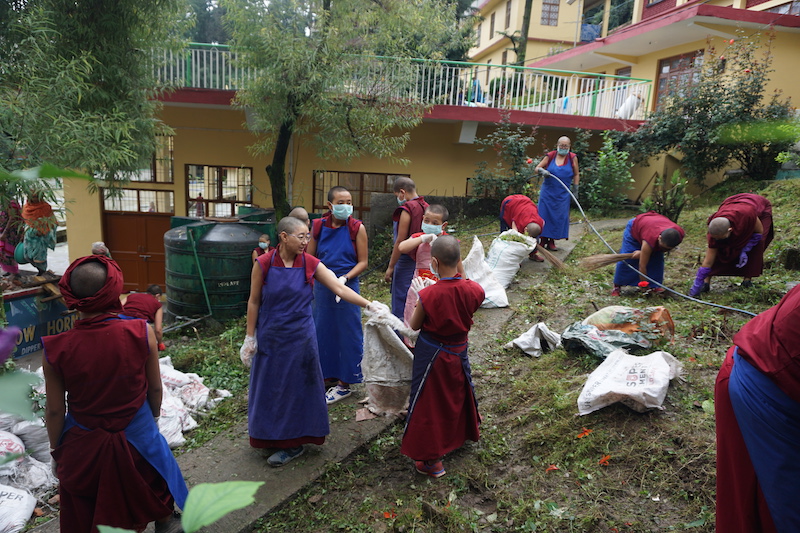
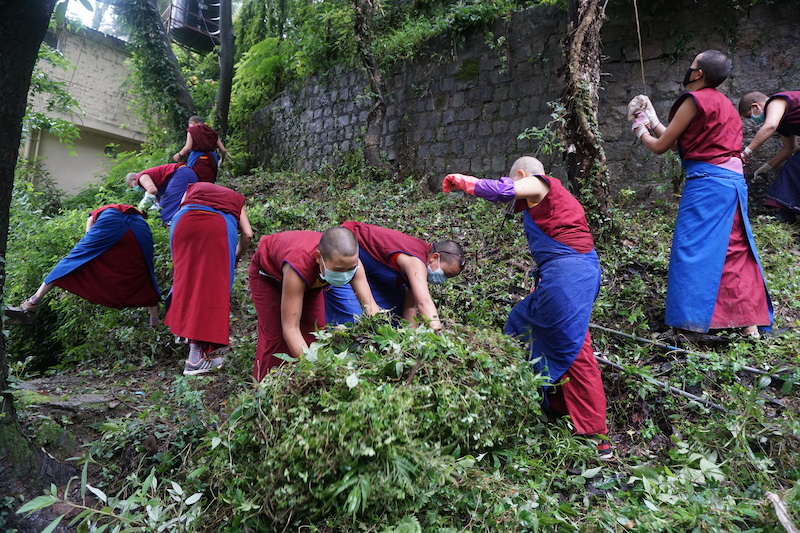
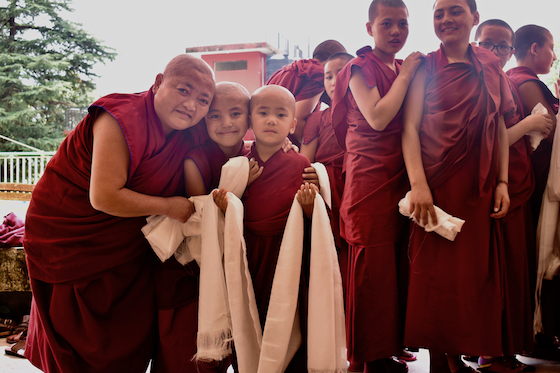











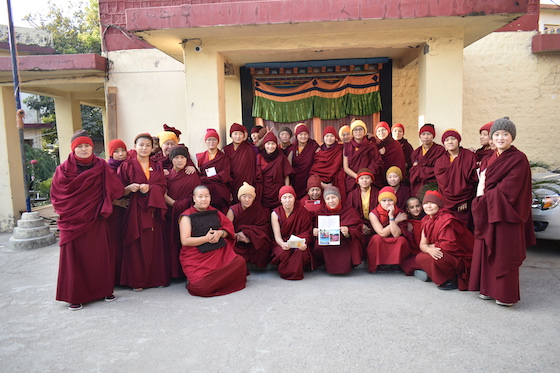
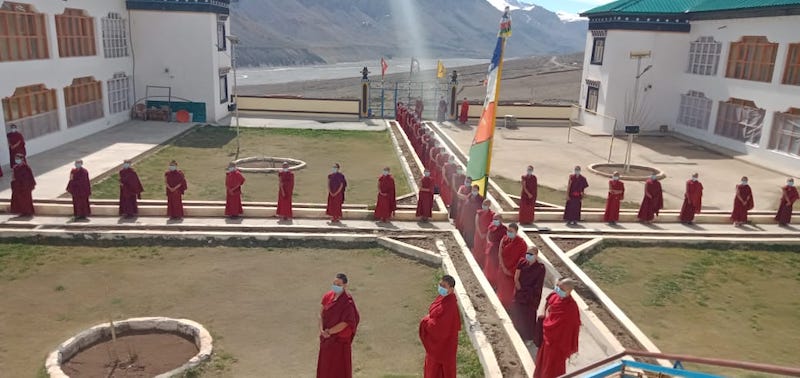
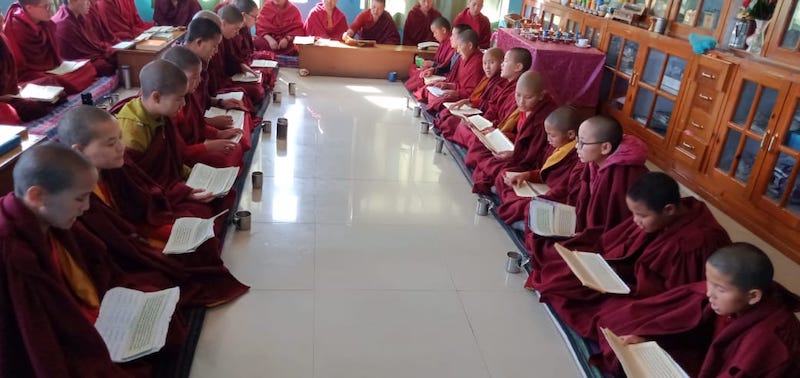
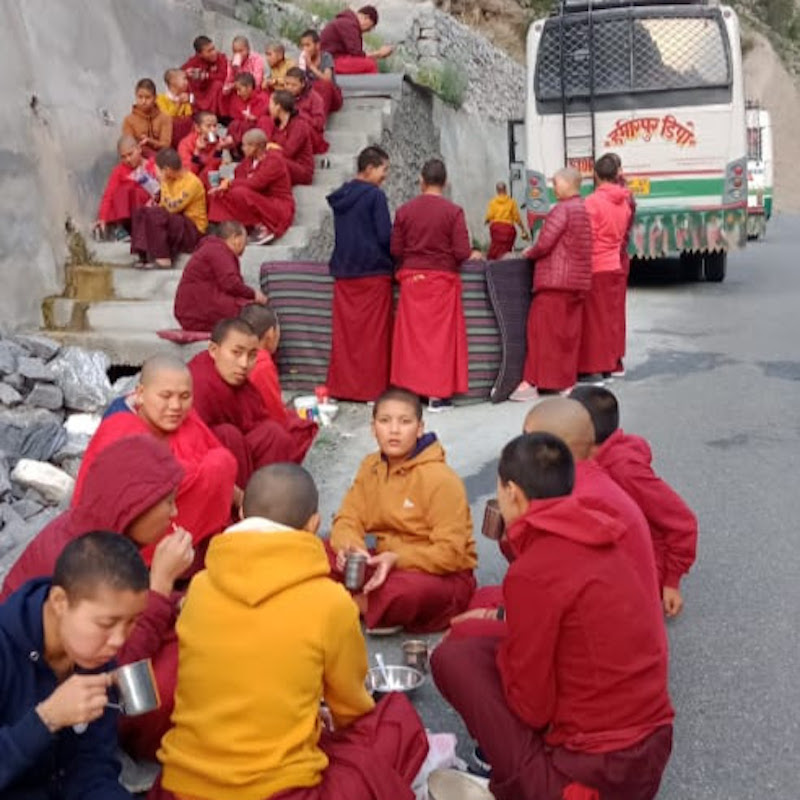
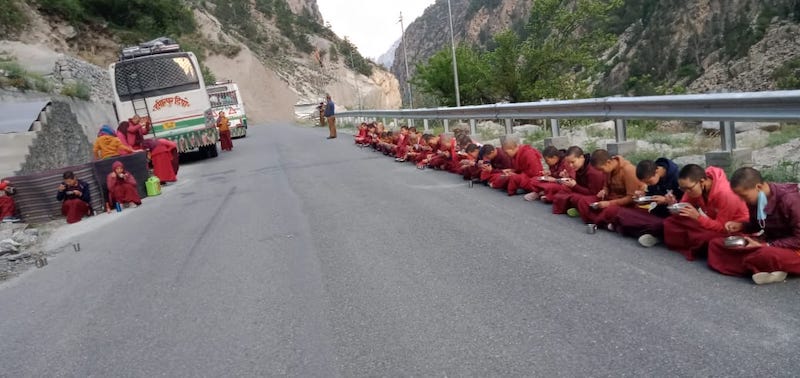
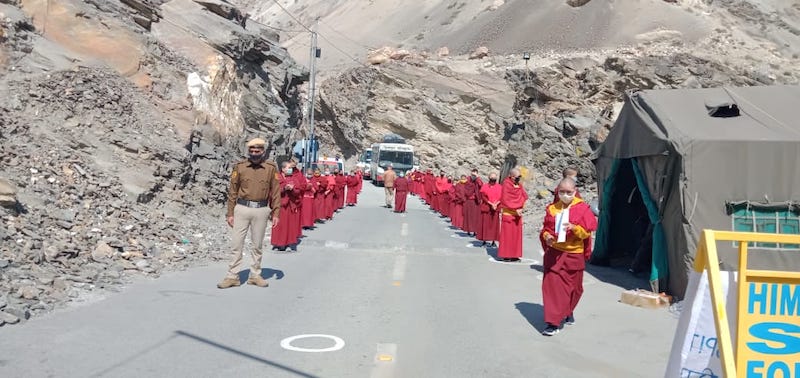
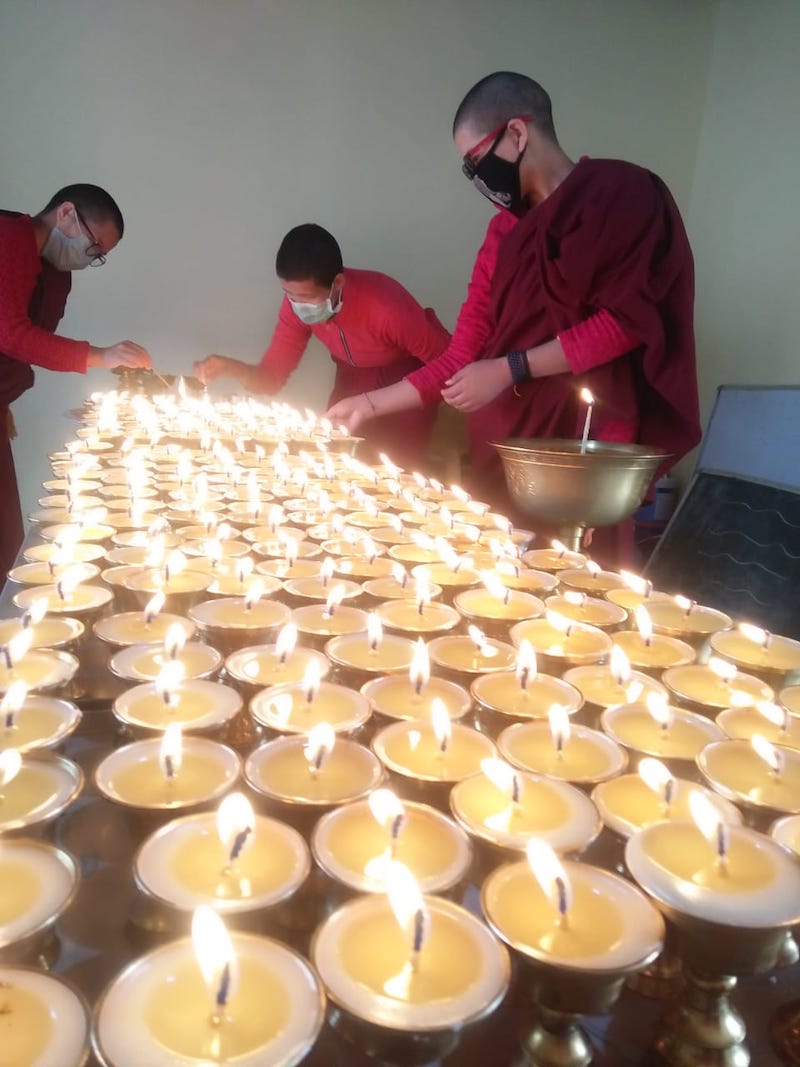
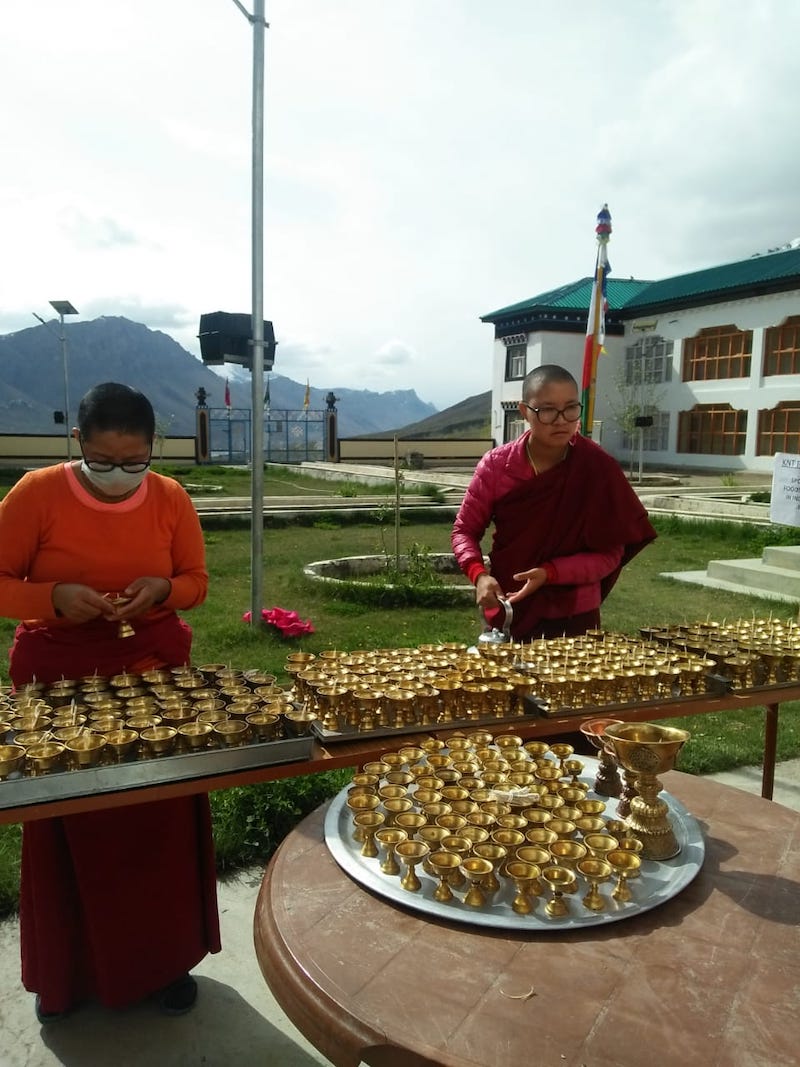
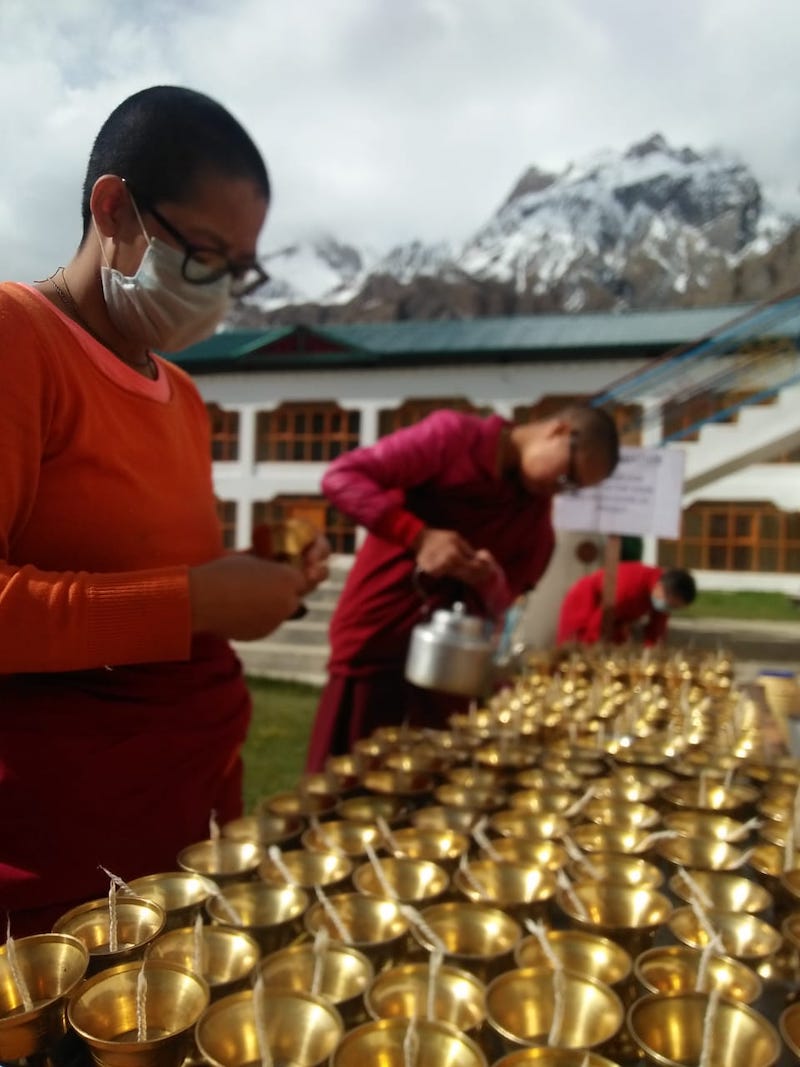
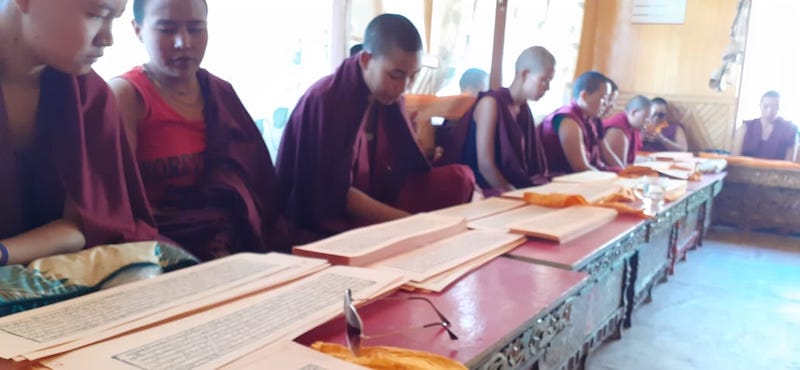
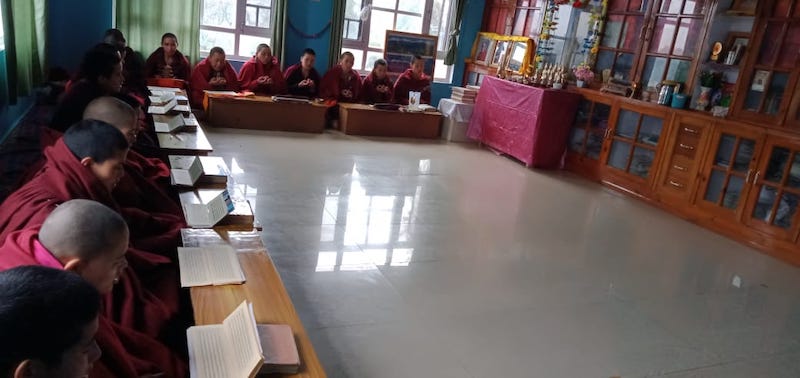
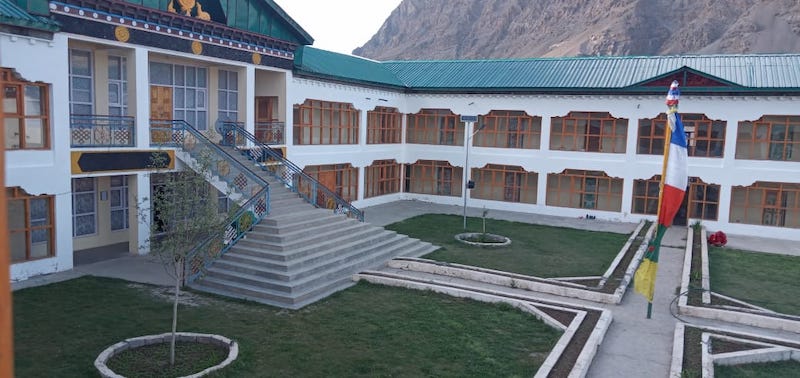
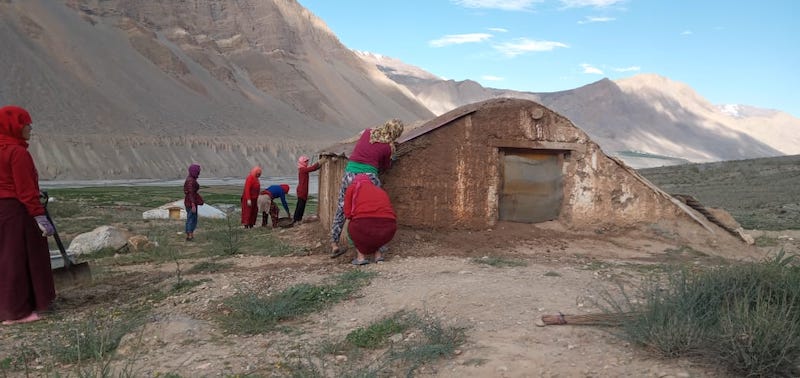
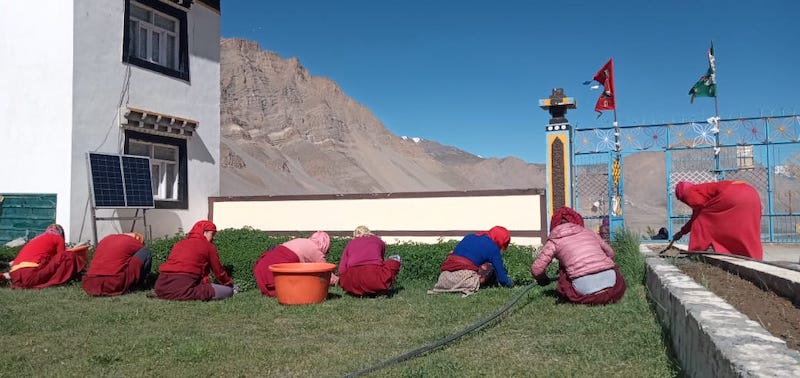
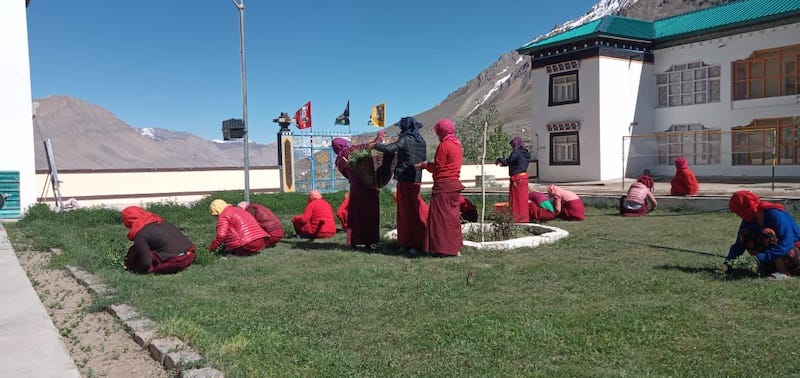
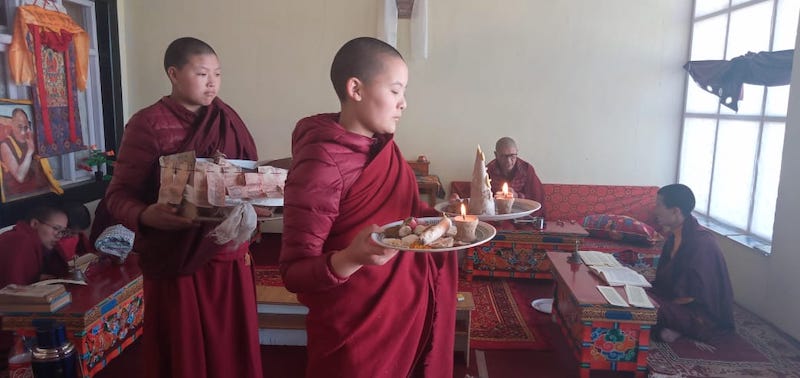
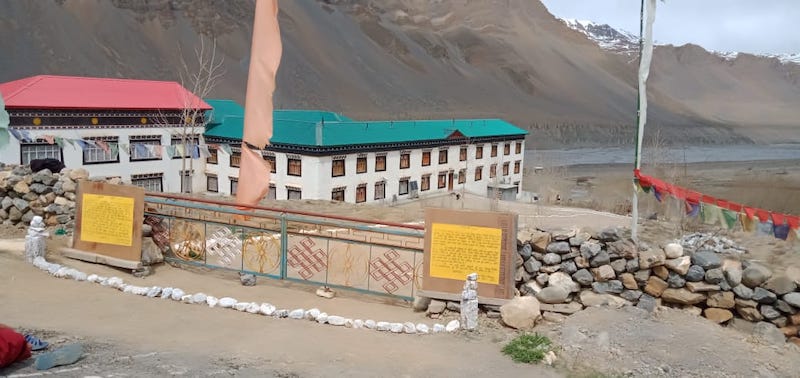
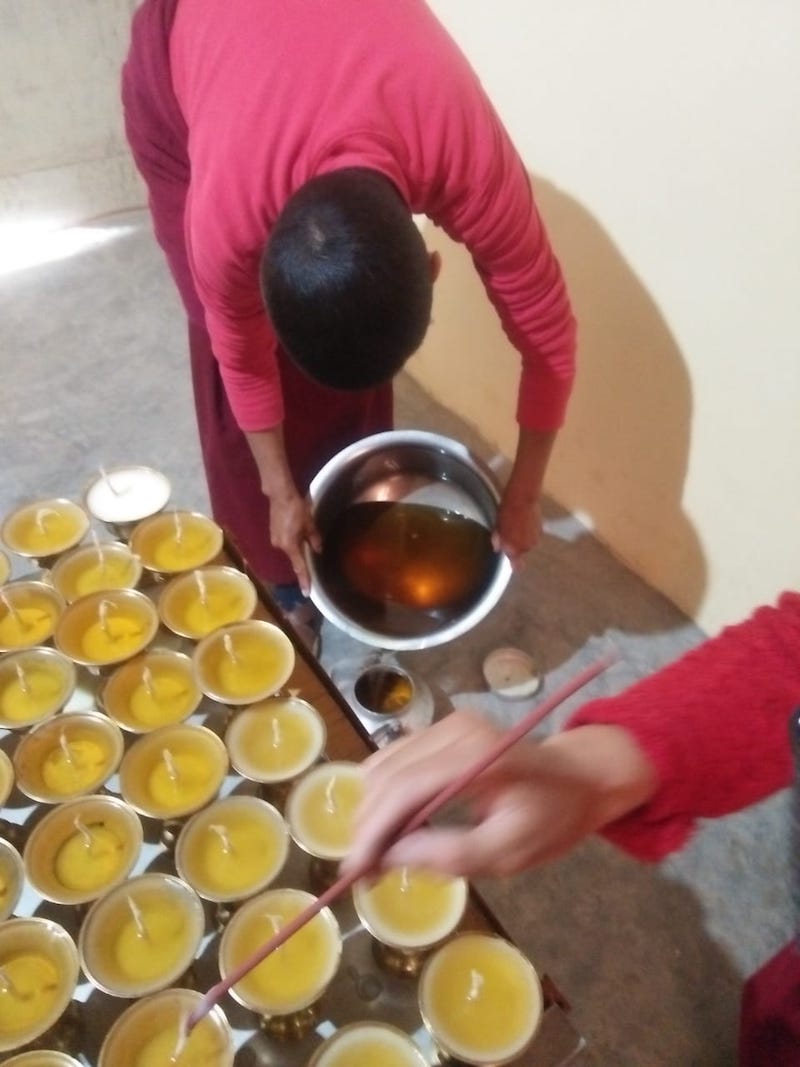
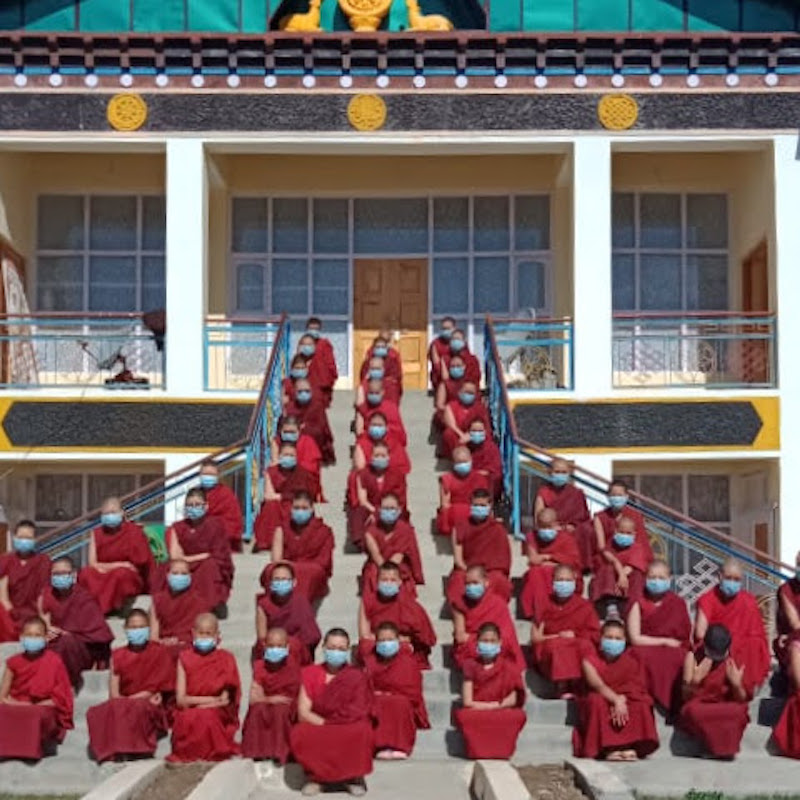
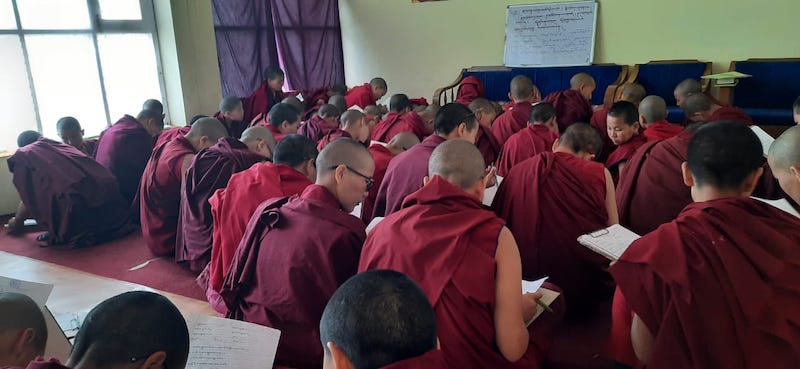
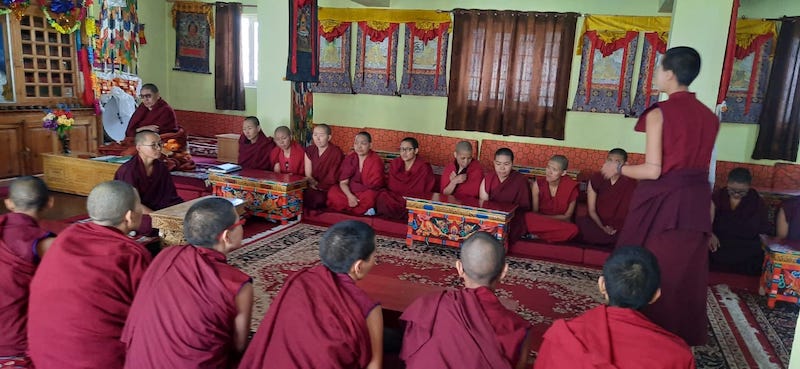
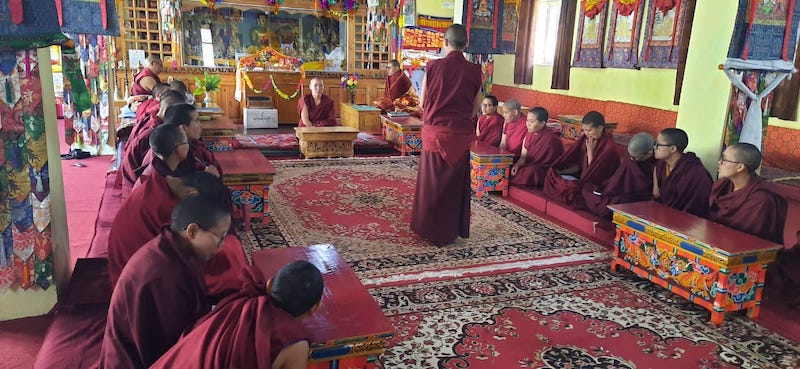
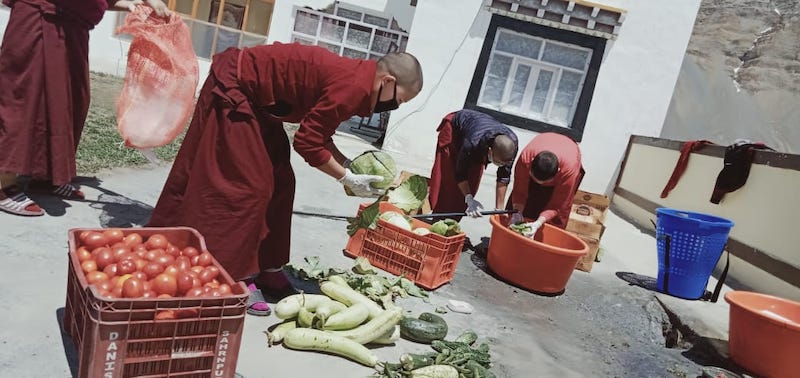
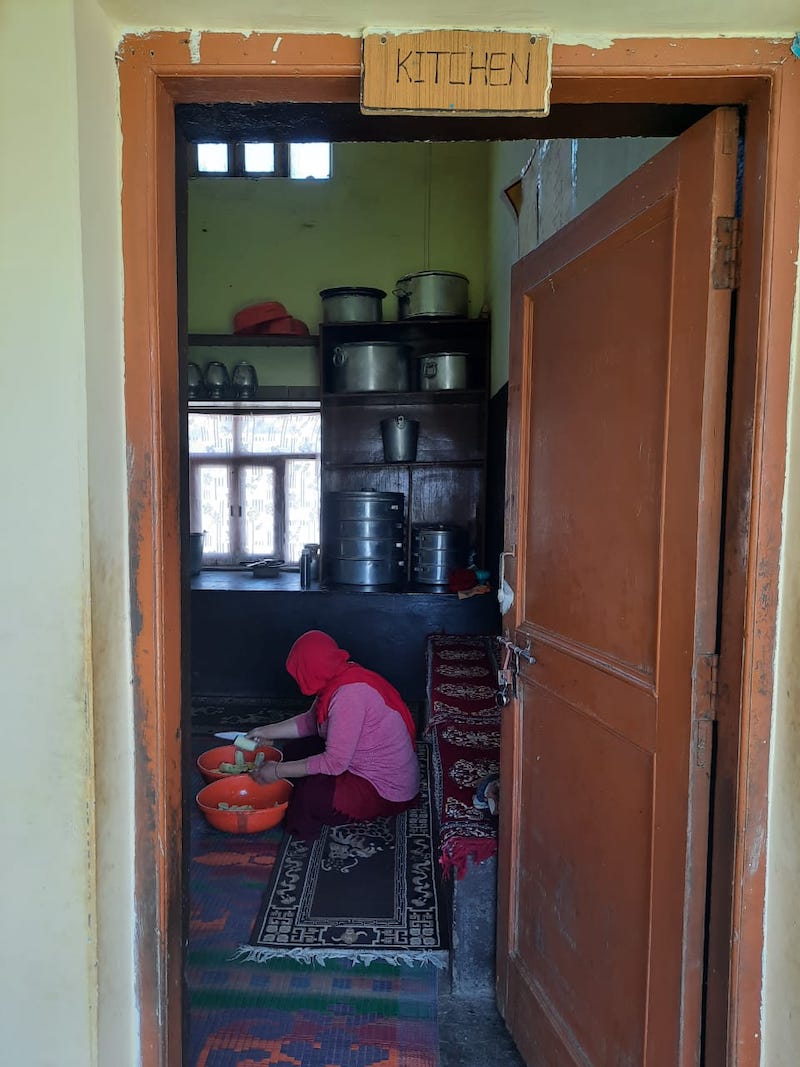
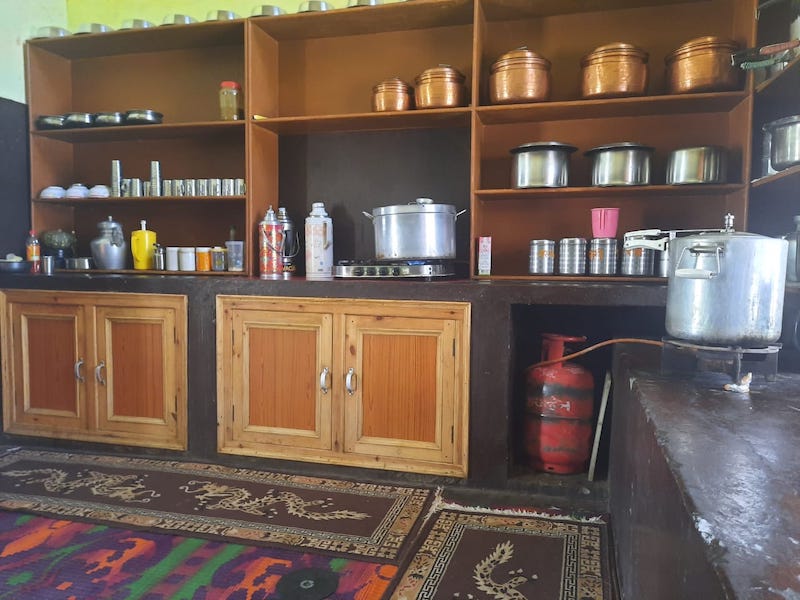
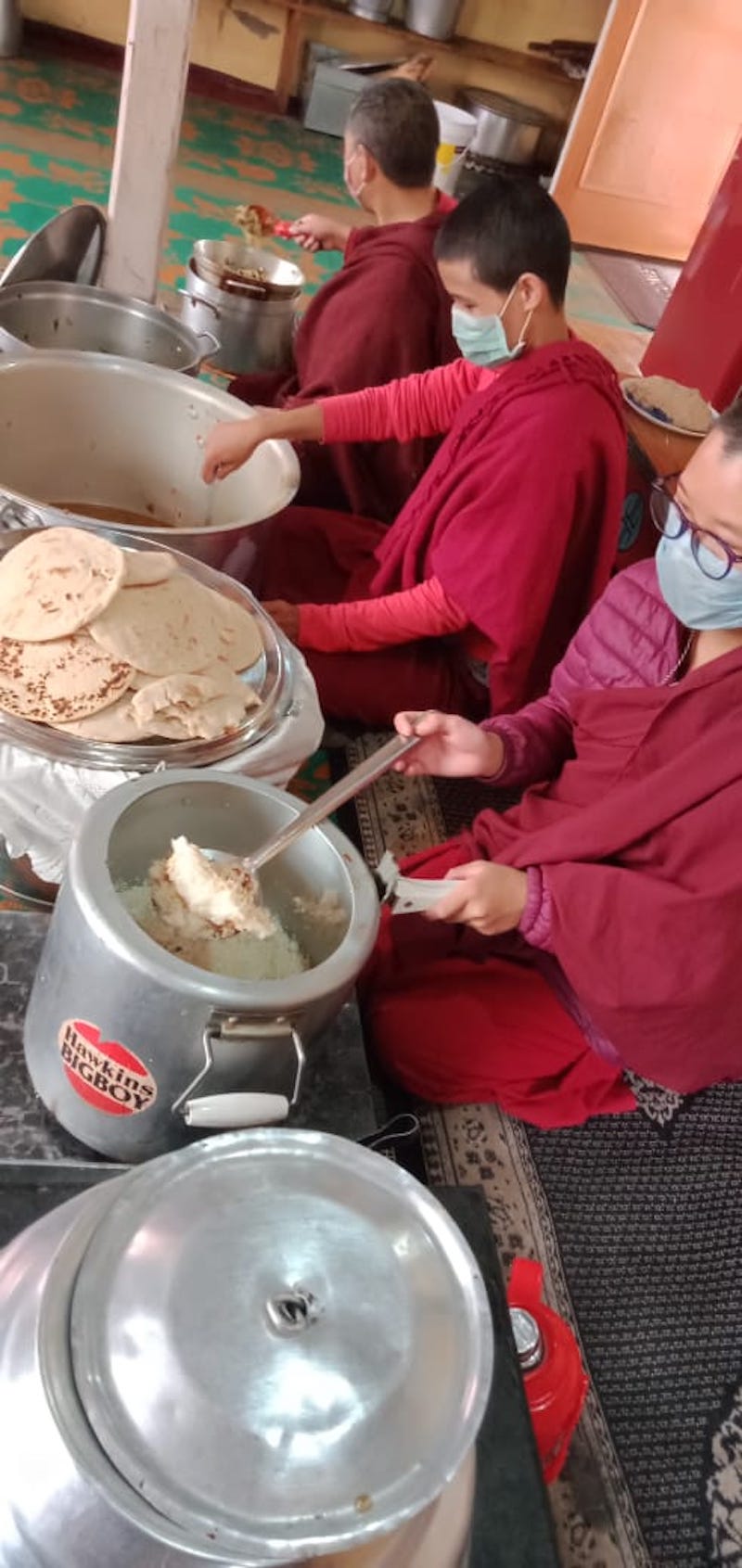
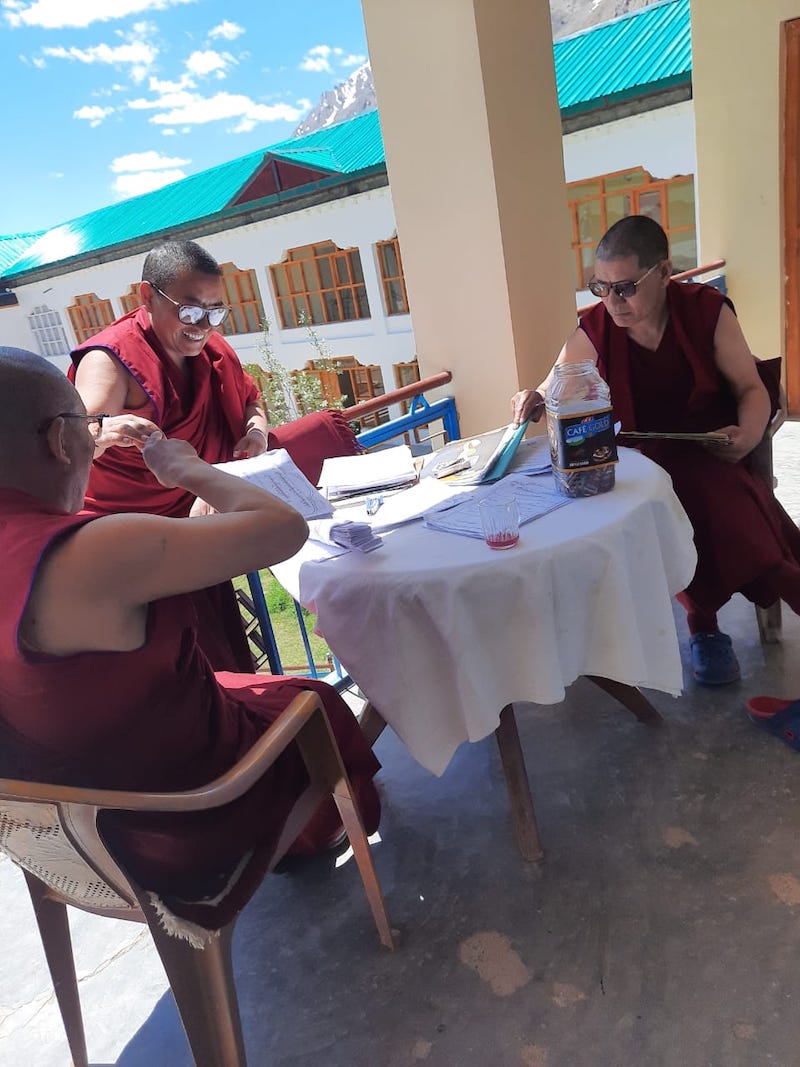
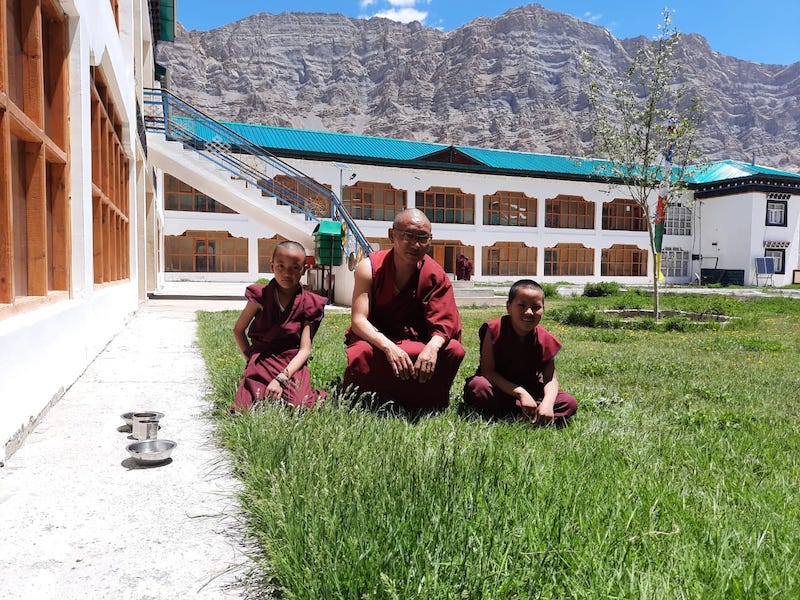
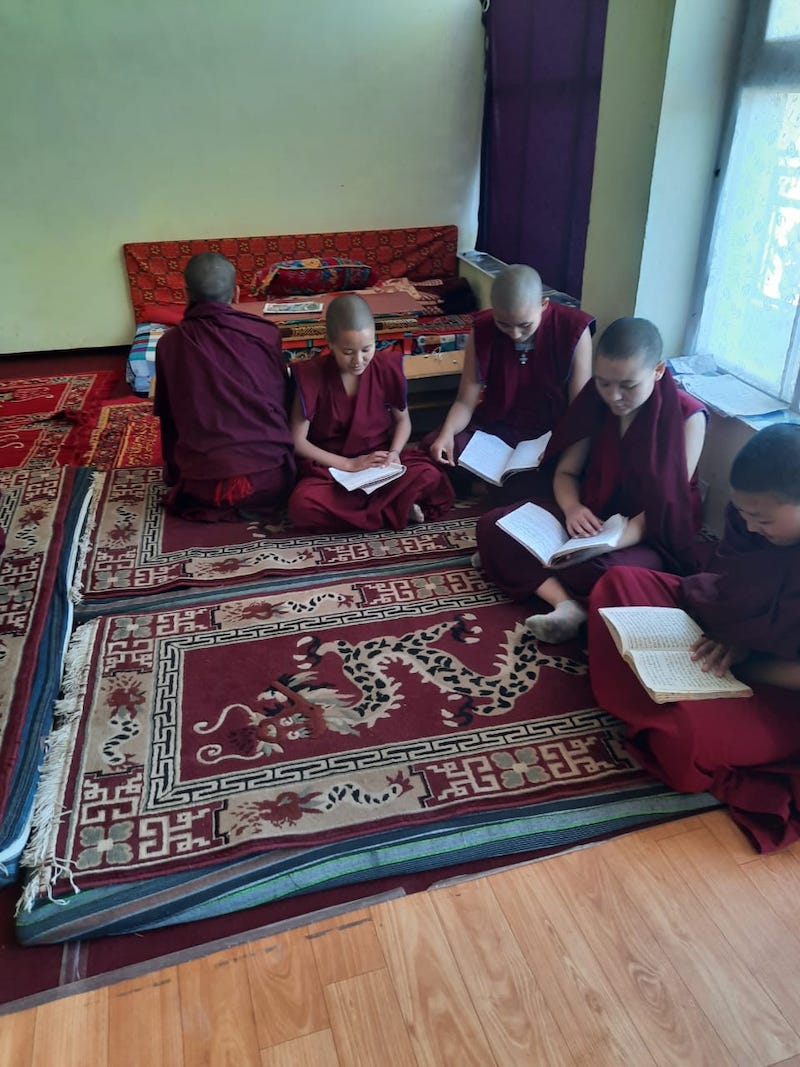
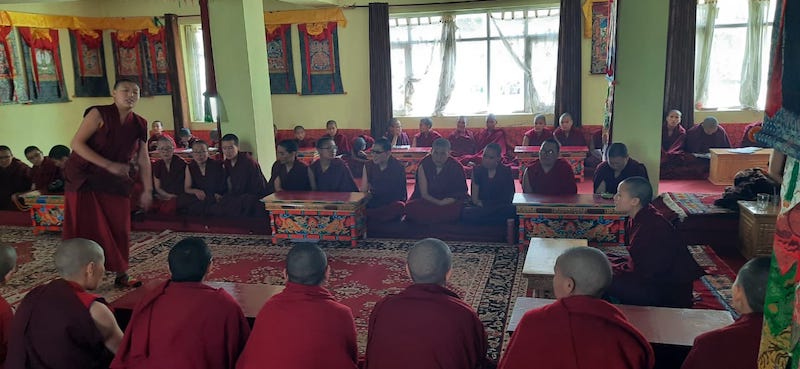
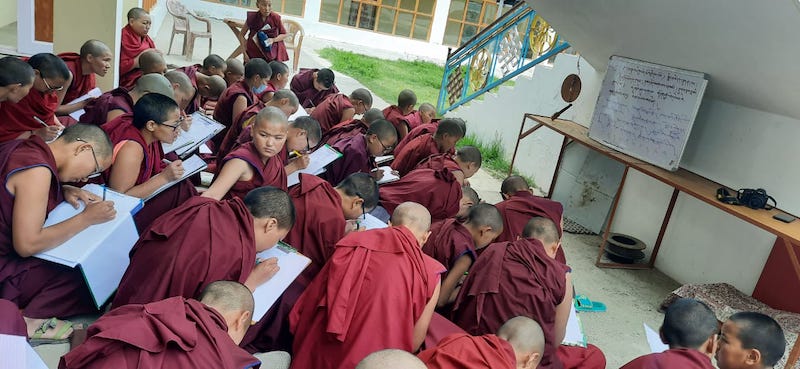
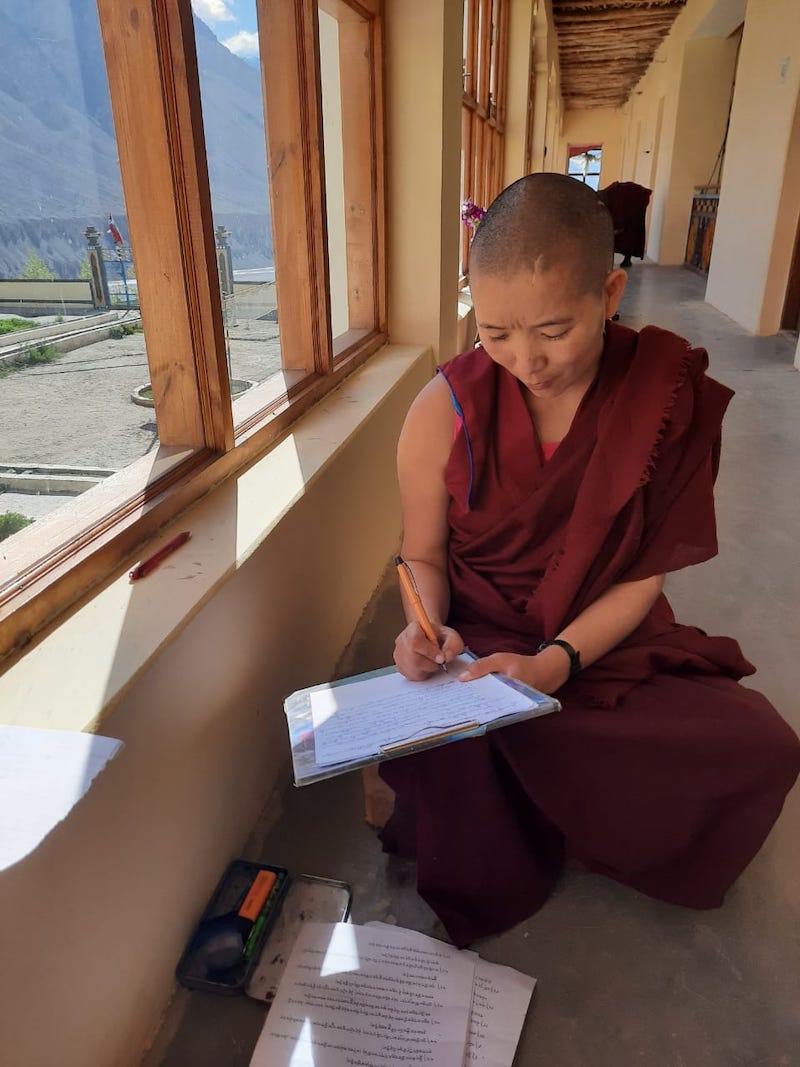
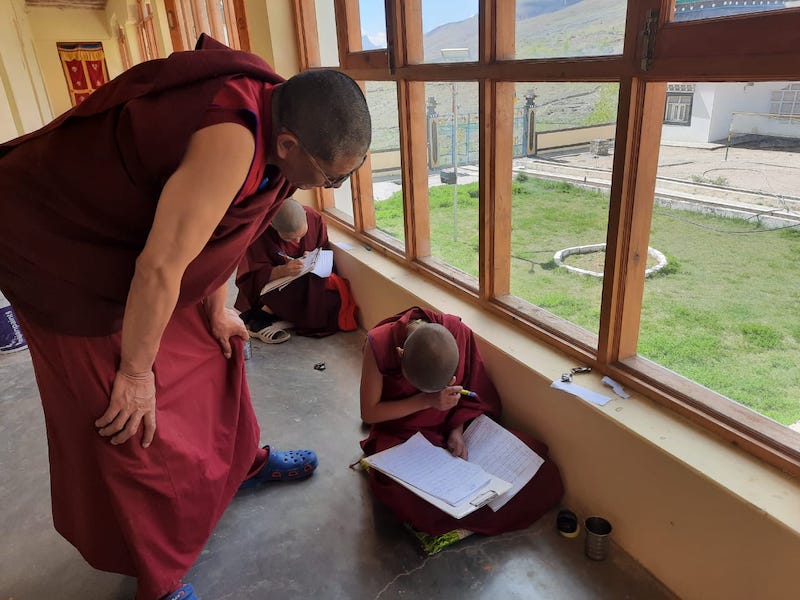
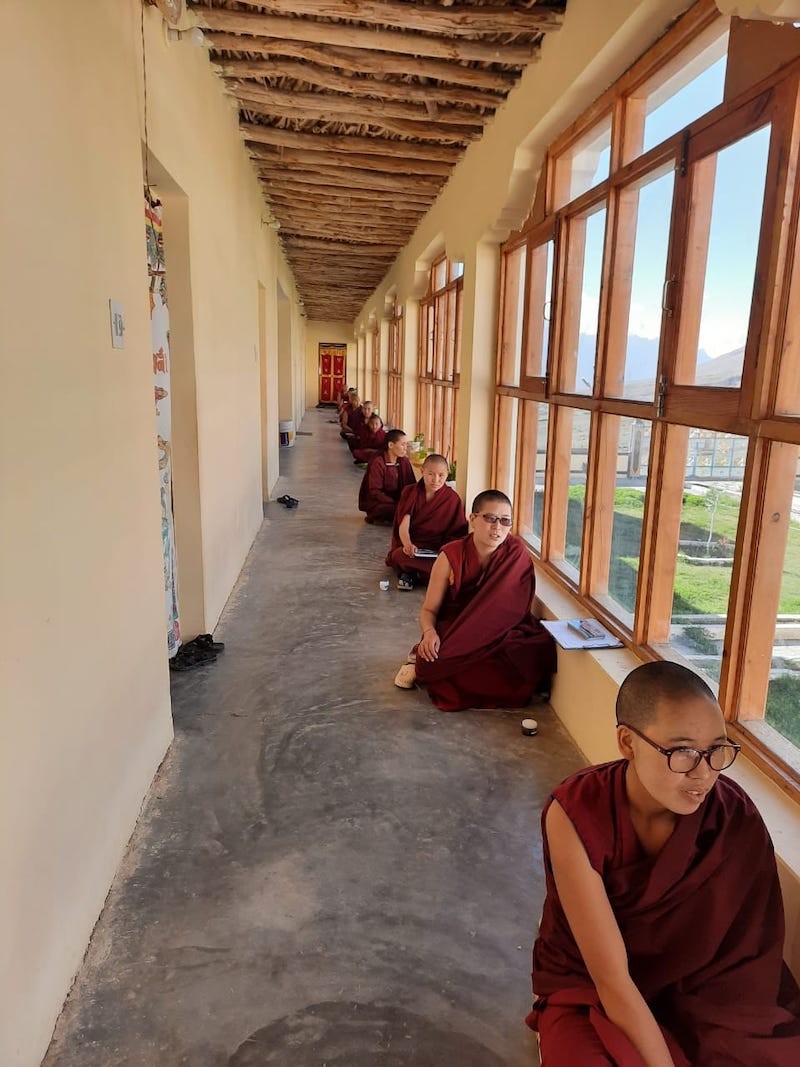
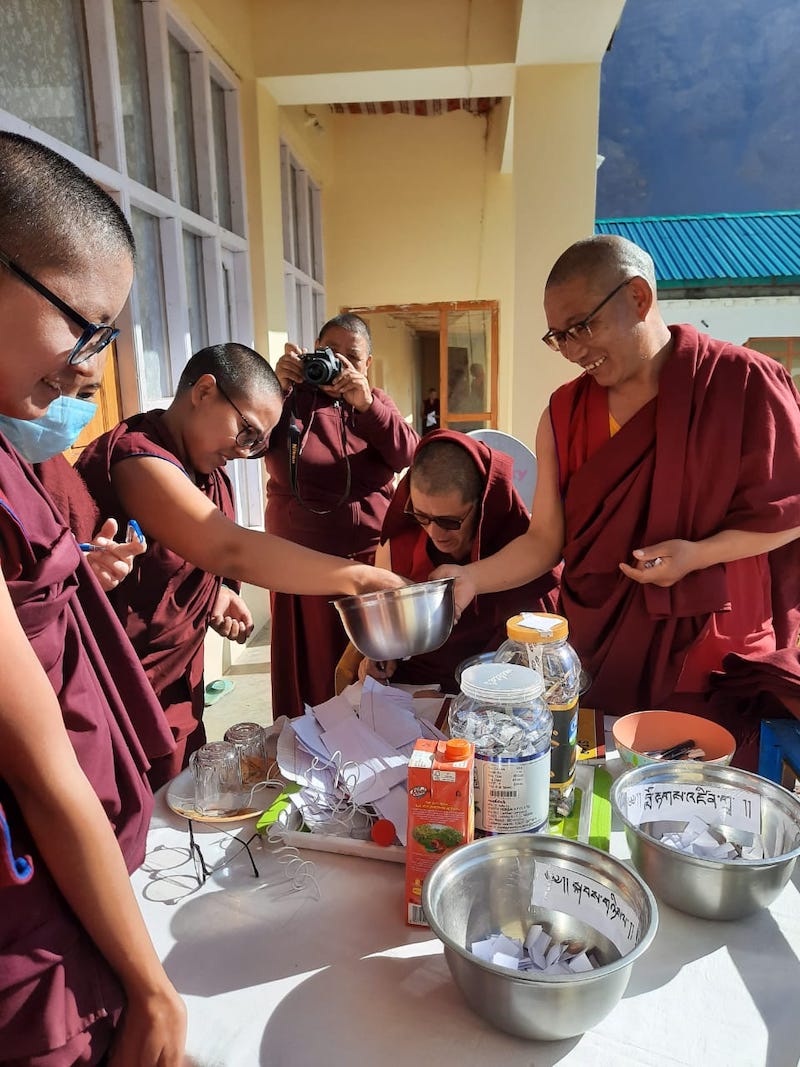
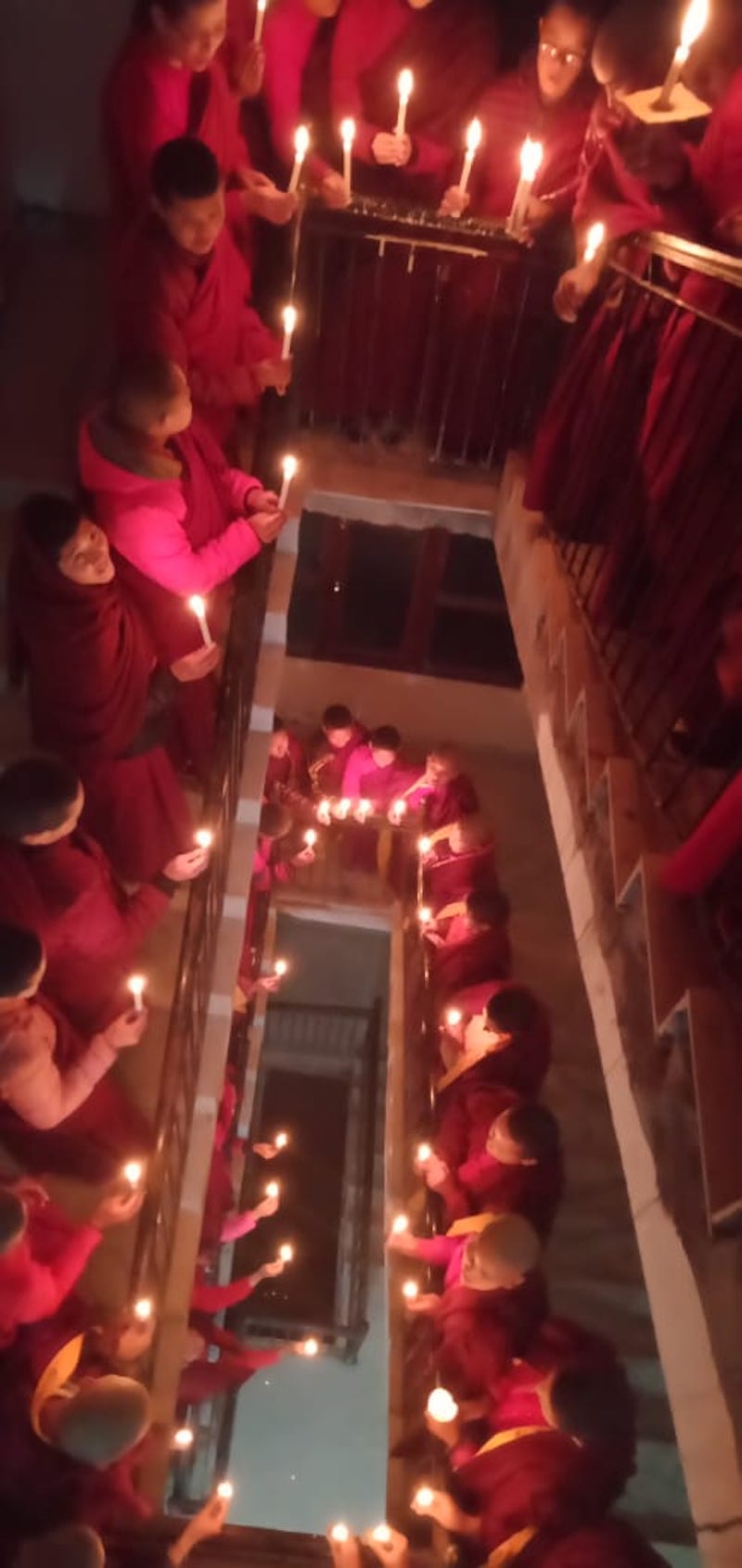
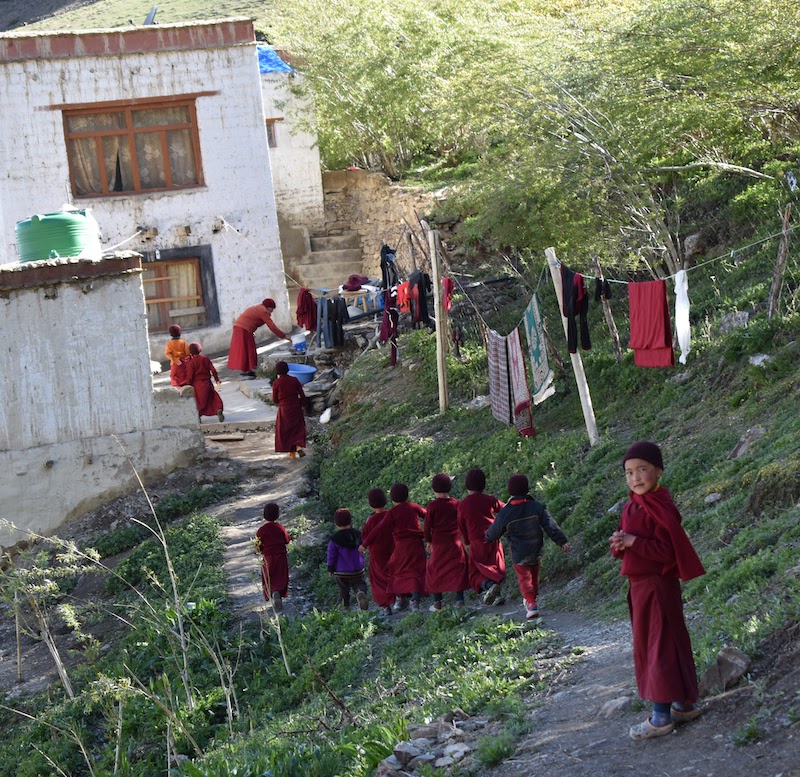
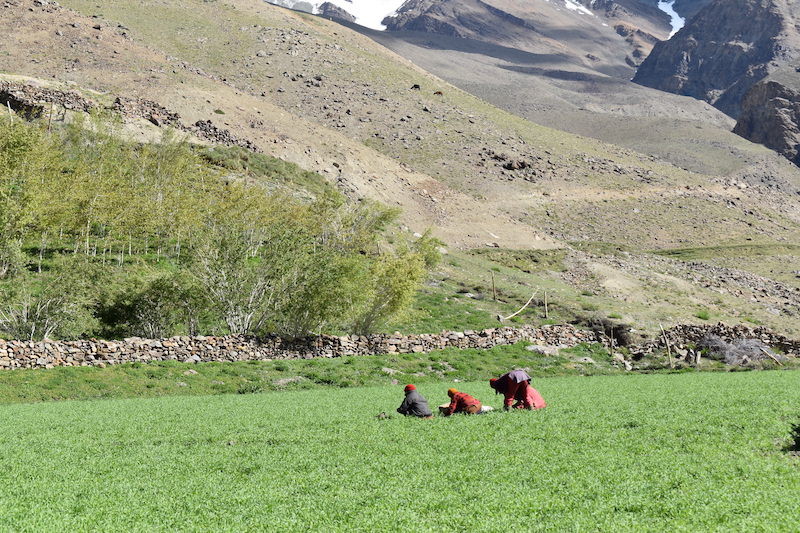
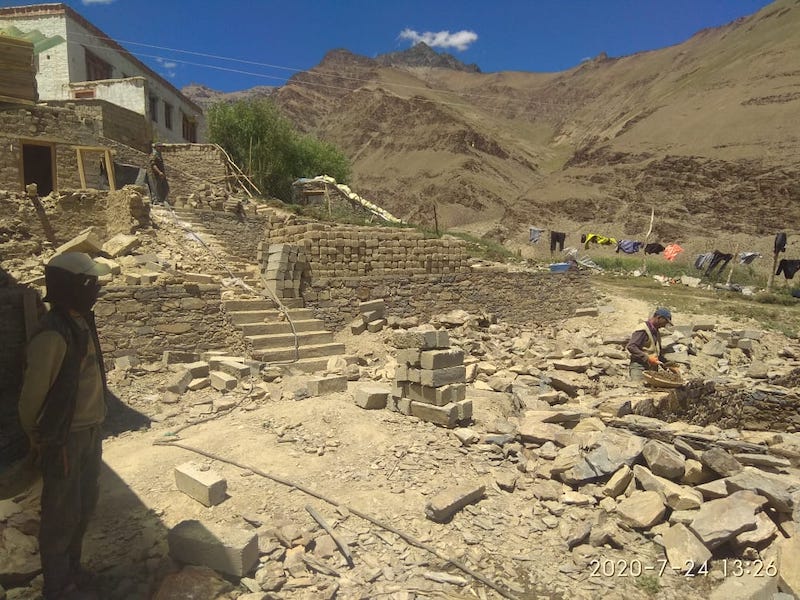
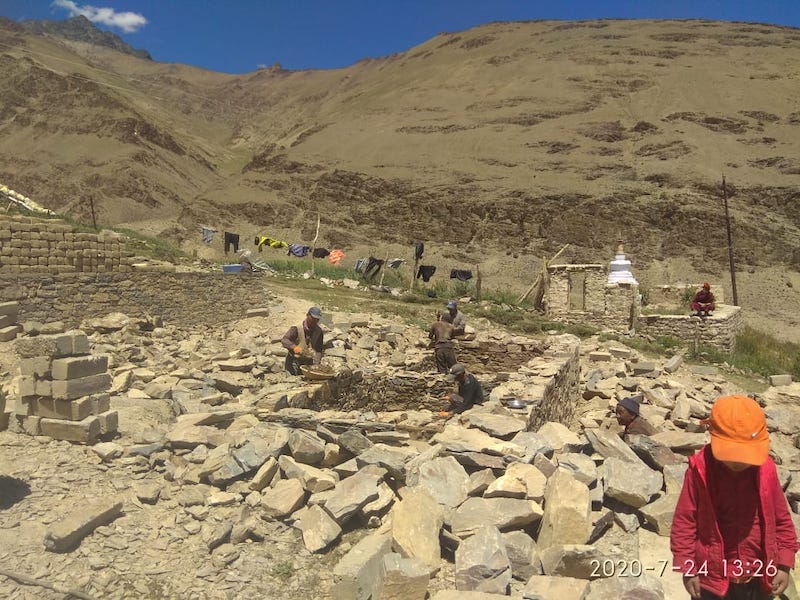
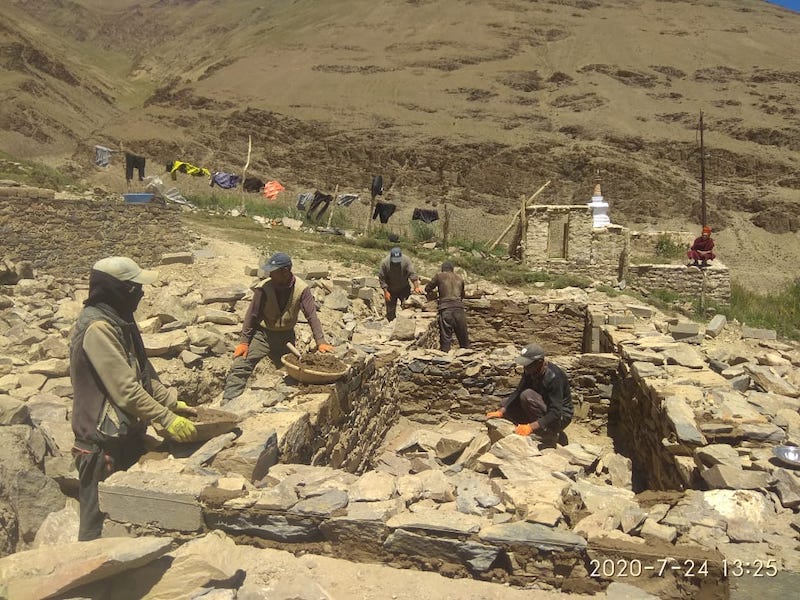
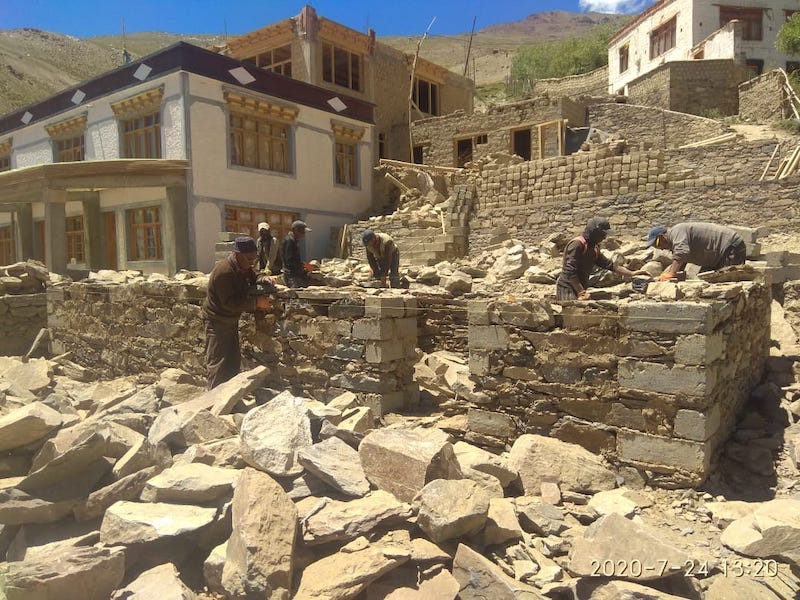
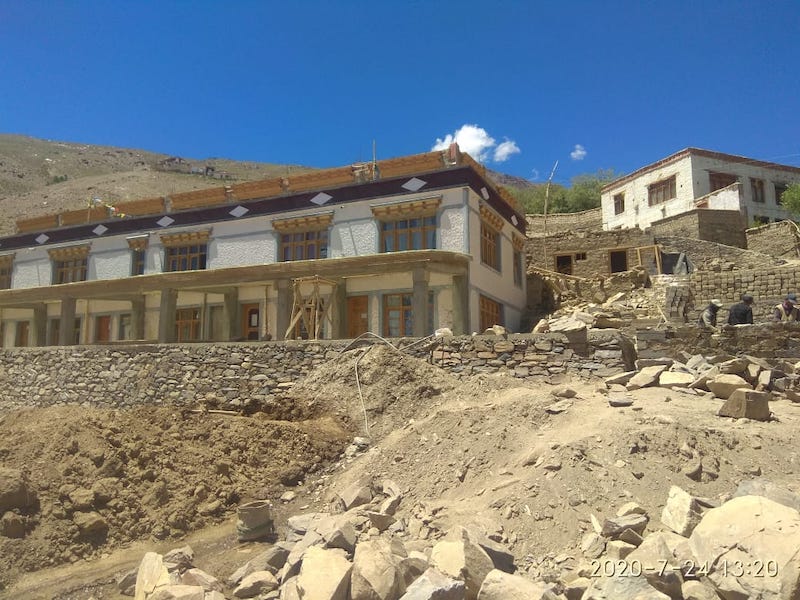
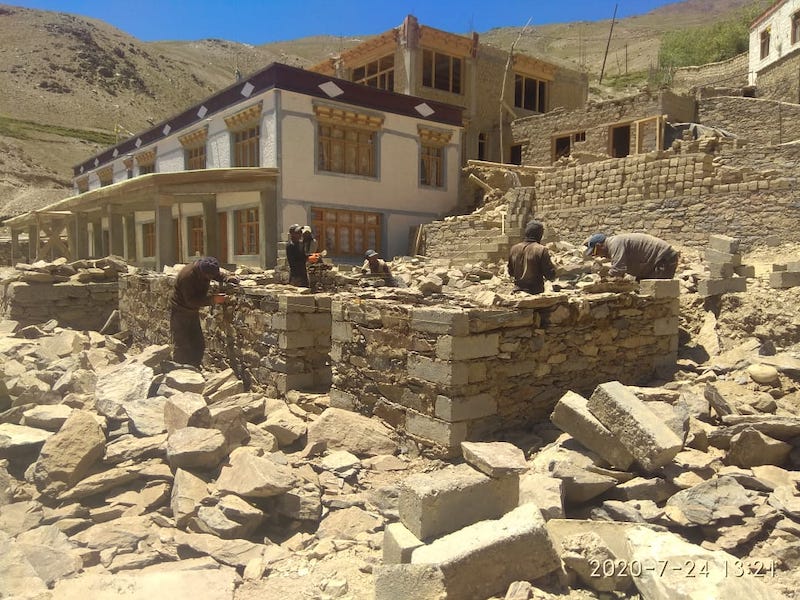
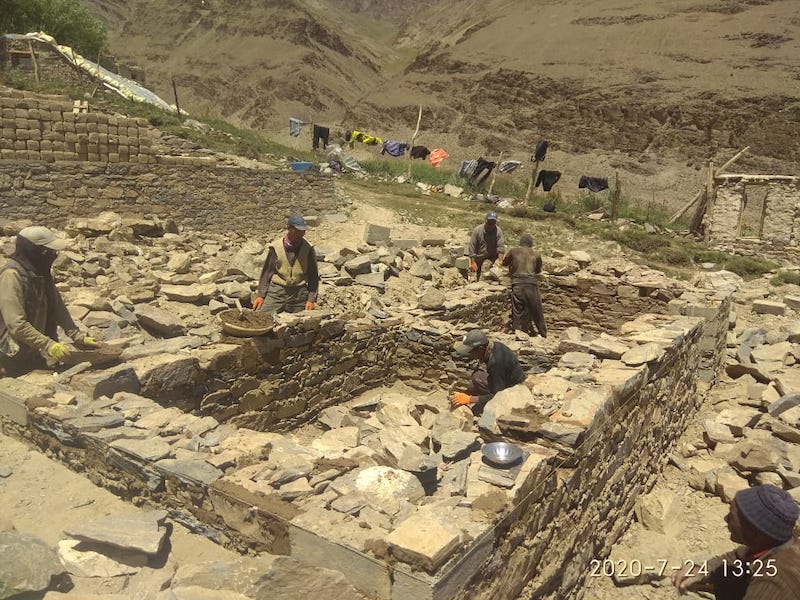
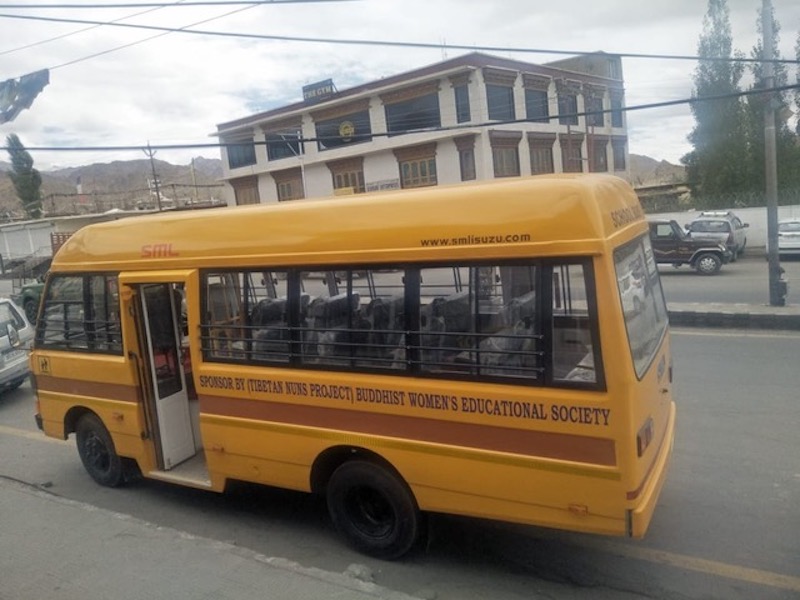
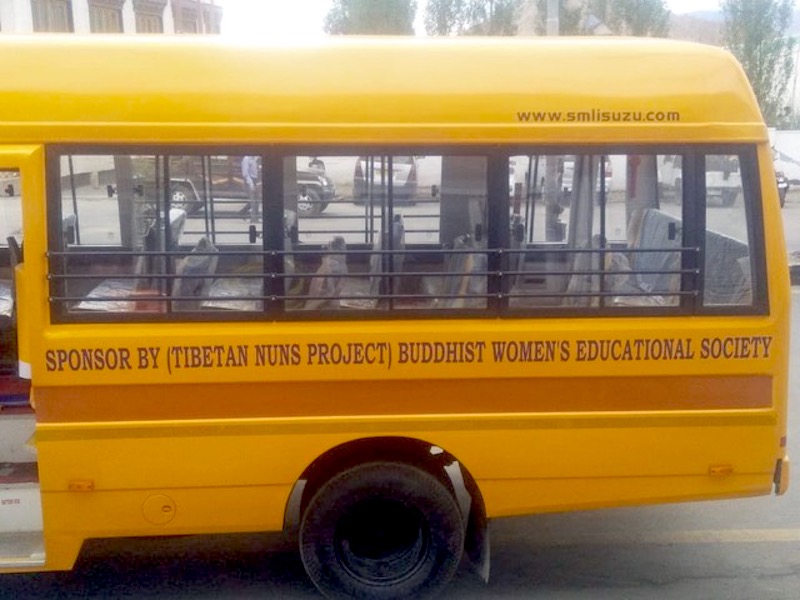
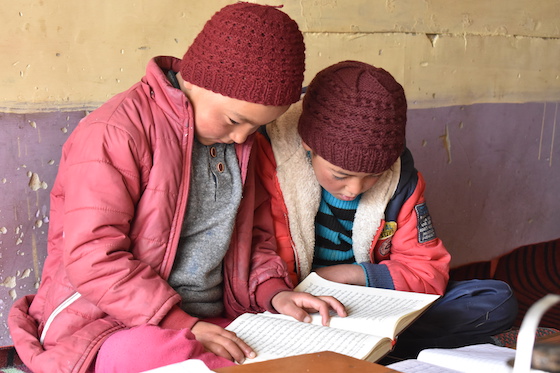





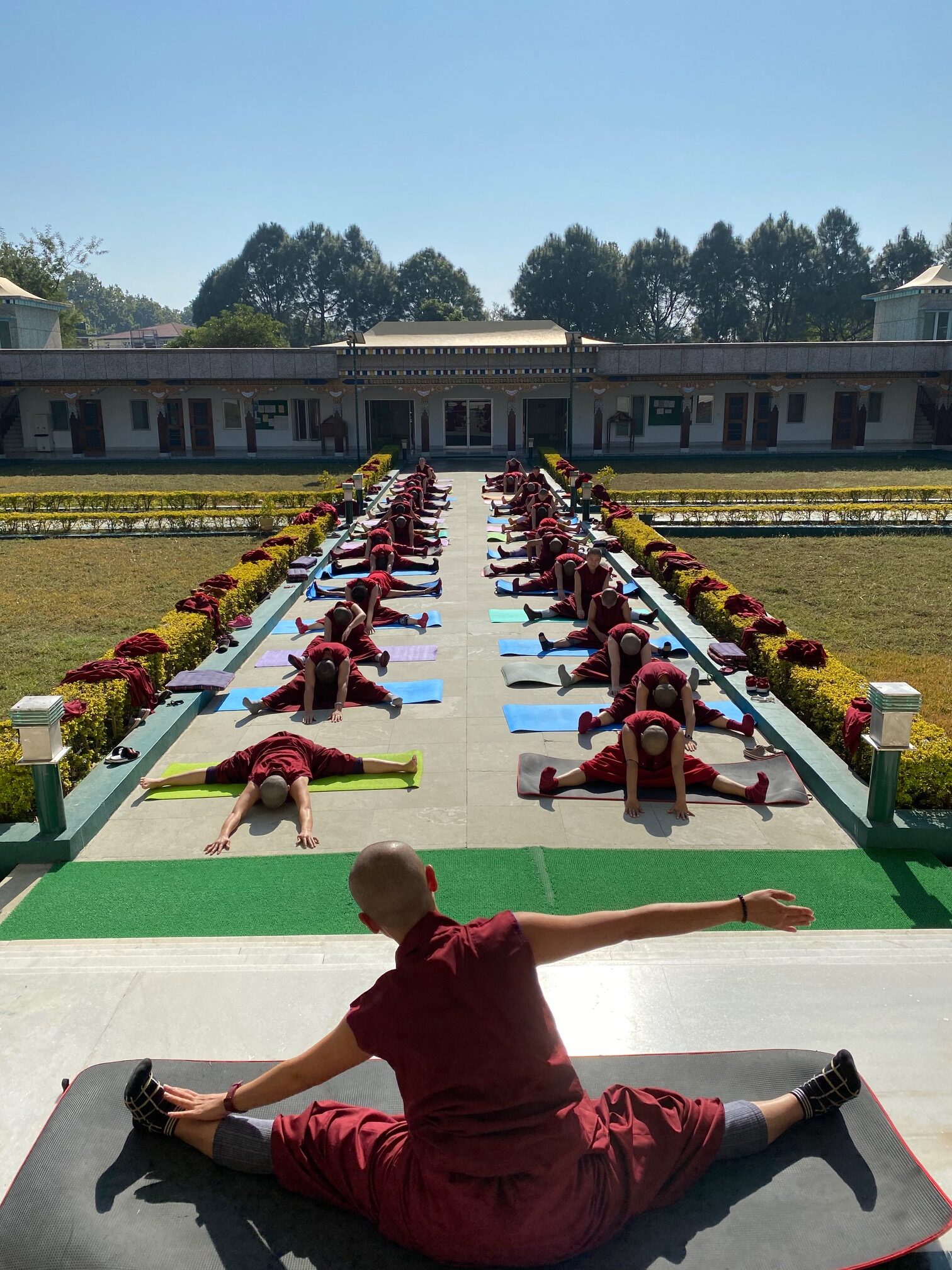





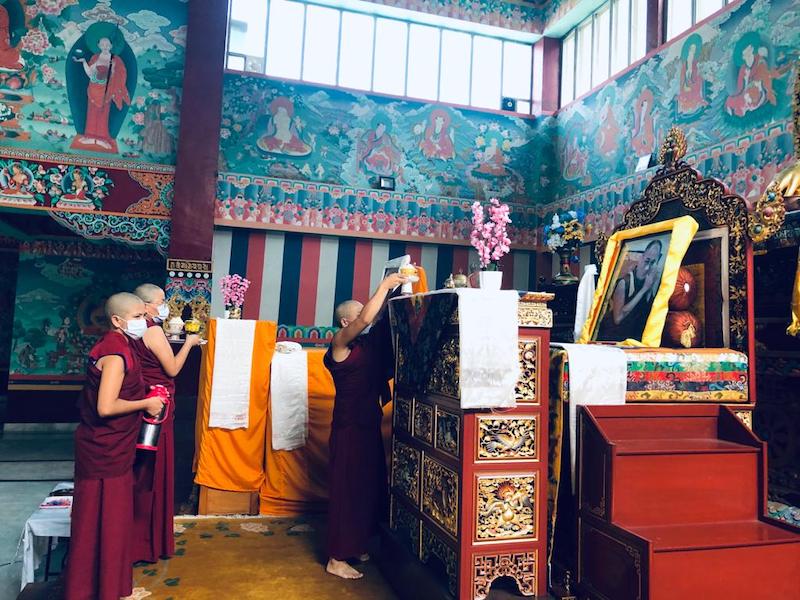
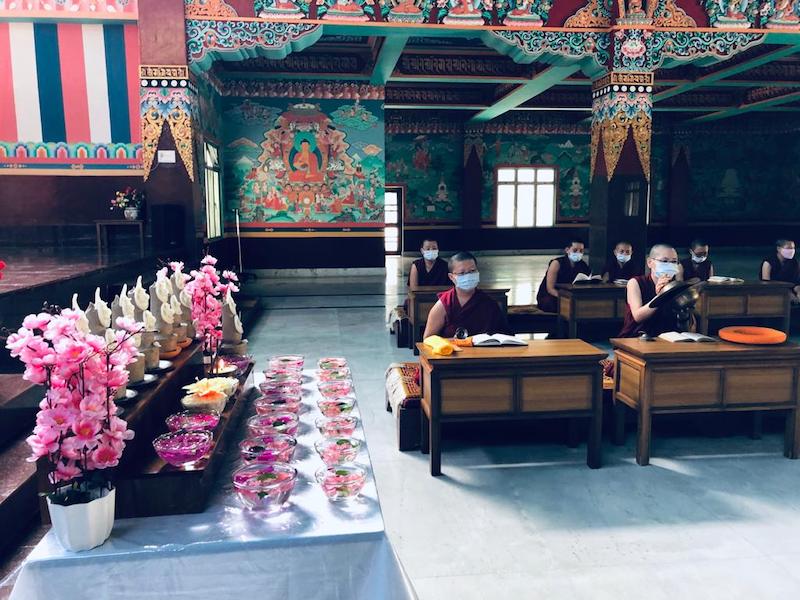
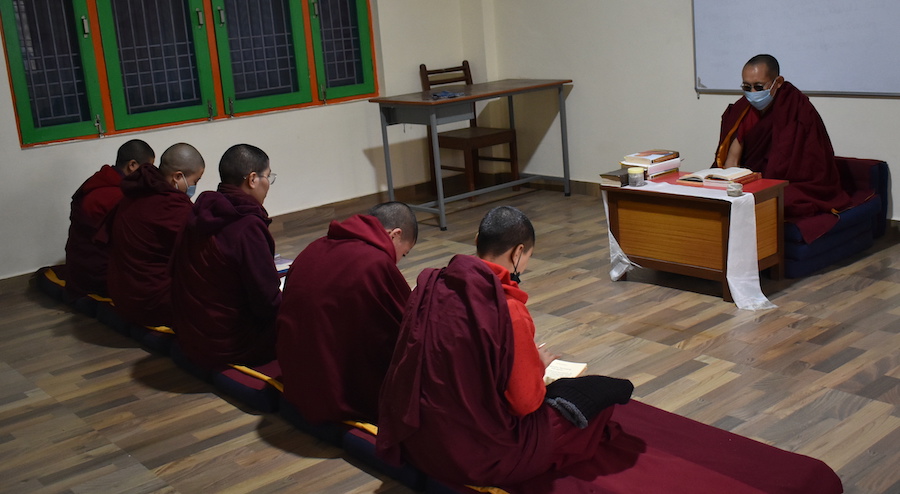
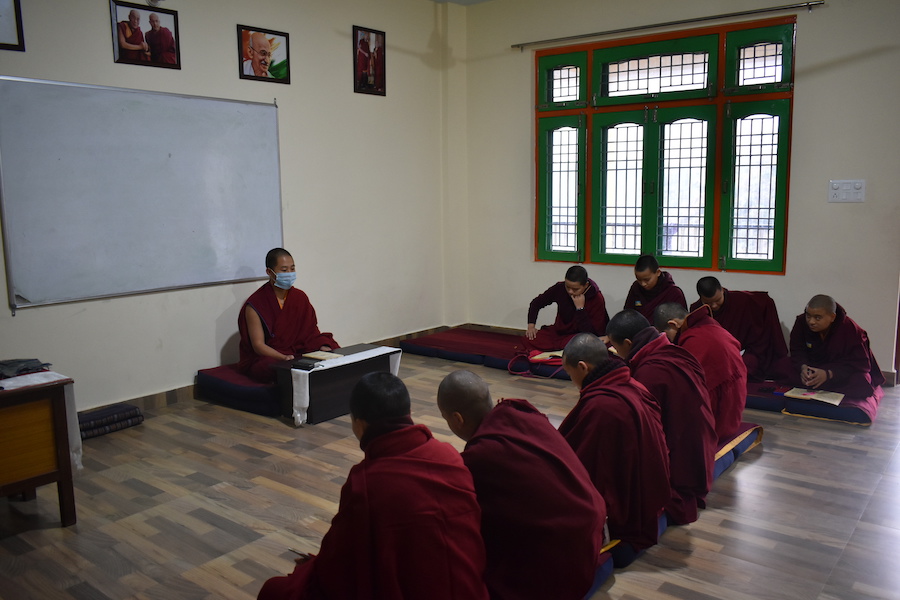








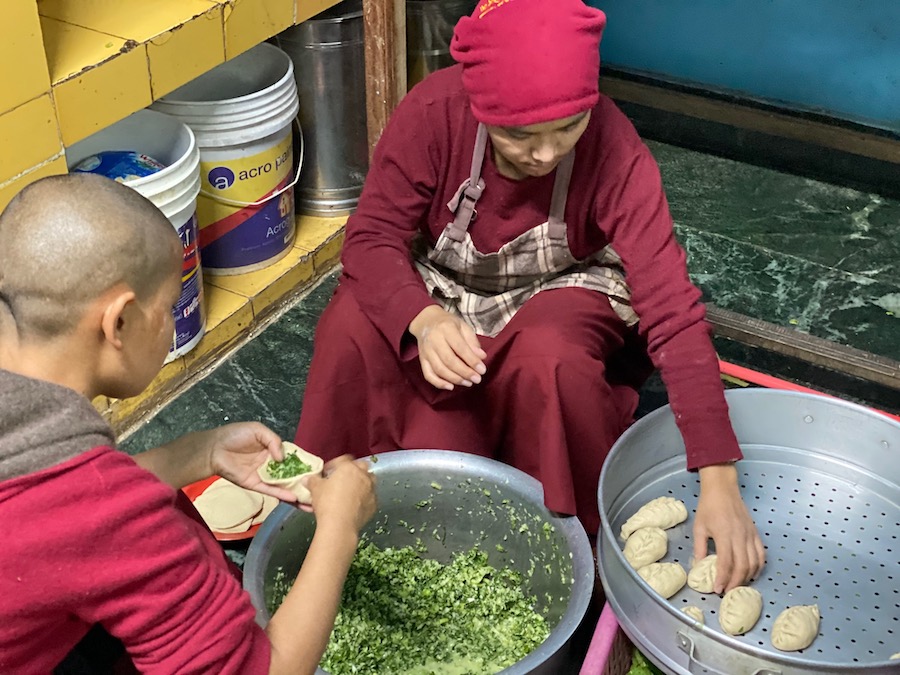
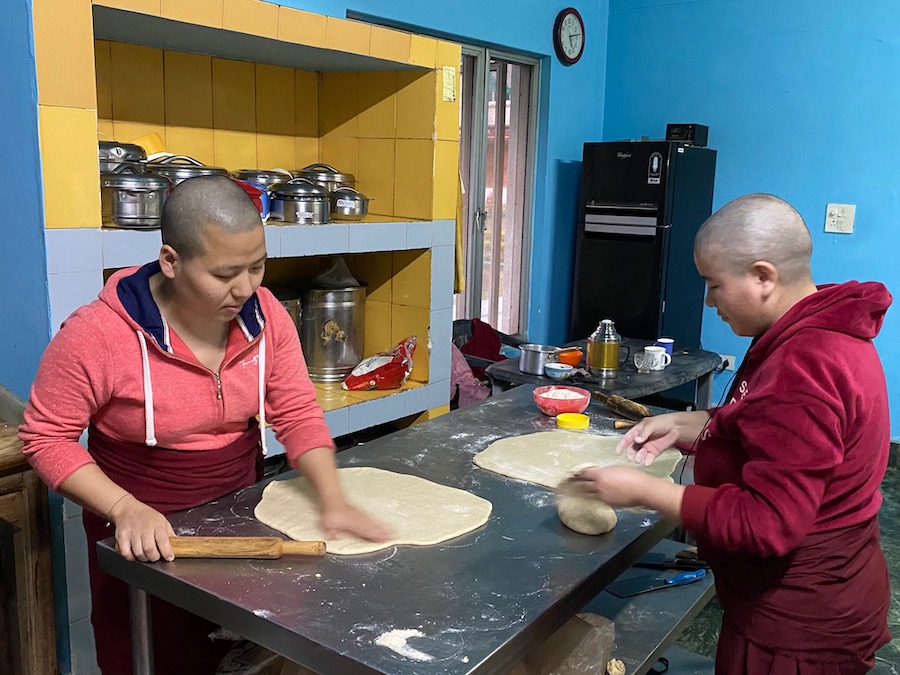






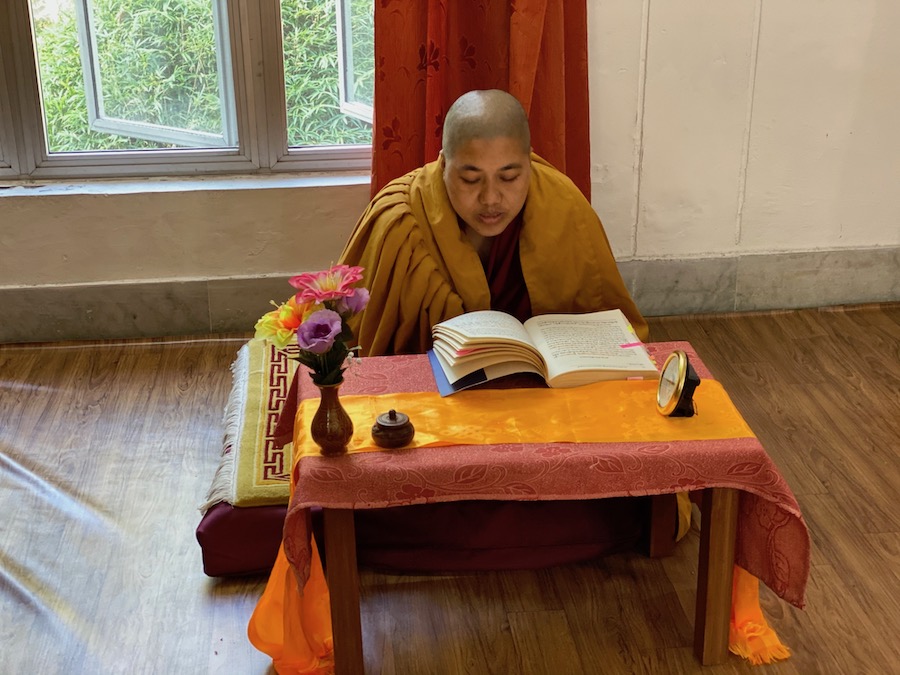

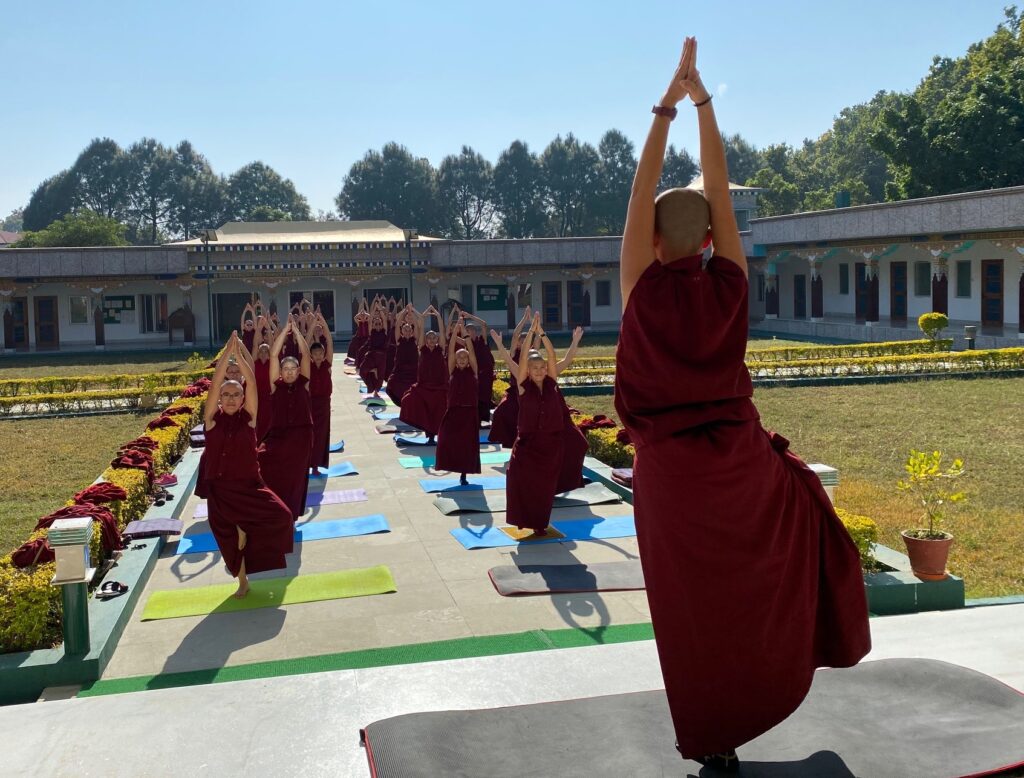 Even so, as part of measures to provide emotional health care, a Vipassana meditation master and a yoga expert were invited to give workshops. The College invited Associate Professor Ramesh Chandra Negi from the Central University of Tibetan Studies and an expert in
Even so, as part of measures to provide emotional health care, a Vipassana meditation master and a yoga expert were invited to give workshops. The College invited Associate Professor Ramesh Chandra Negi from the Central University of Tibetan Studies and an expert in 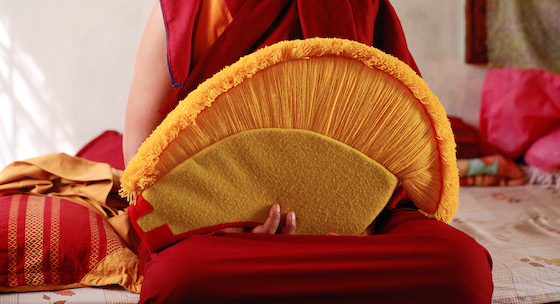
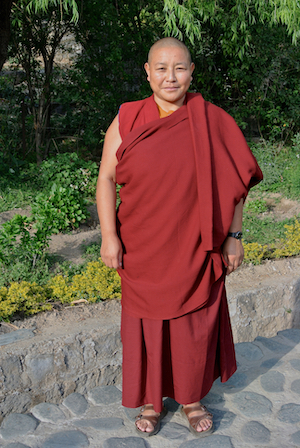
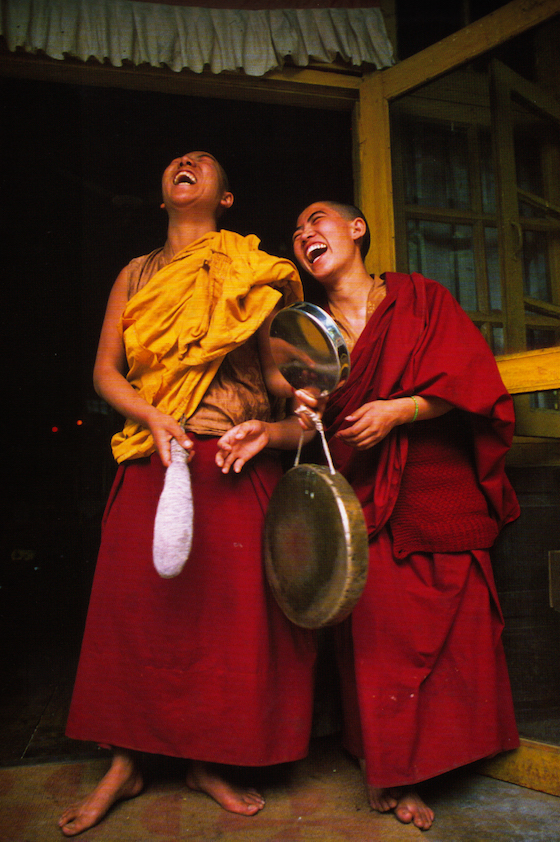 Laughing Nuns: The Story Behind the Photograph
Laughing Nuns: The Story Behind the Photograph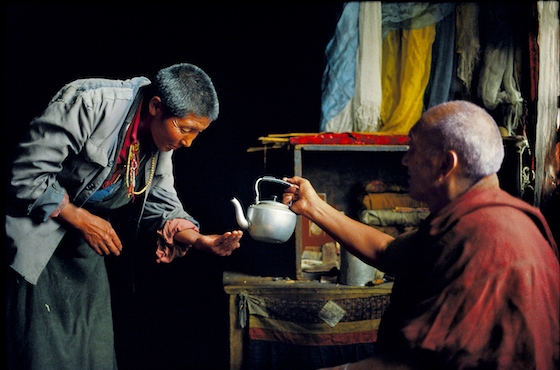 Giving and Receiving
Giving and Receiving